Movie Review By: Mr. Roboto
Year: 1973
Directed by: Rainer Werner Fassbinder
Written by: Rainer Werner Fassbinder, Fritz Müller-Scherz, and Daniel F. Galouye (based on his novel “Simulacron-3″)
IMDB Reference
Degree of Cyberpunk Visuals: Low
Correlation to Cyberpunk Themes: High
Key Cast Members:
Fred Stiller: Klaus Löwitsch
Professor Henry Vollmer: Adrian Hoven
Günther Lause: Ivan Desny
Herbert Siskins: Karl Heinz Vosgerau
Eva Vollmer: Mascha Rabben
Gloria Fromm: Barbara Valentin
Franz Hahn: Wolfgang Schenck
Fritz Walfang: Günter Lamprecht
Rating: 9 out of 10
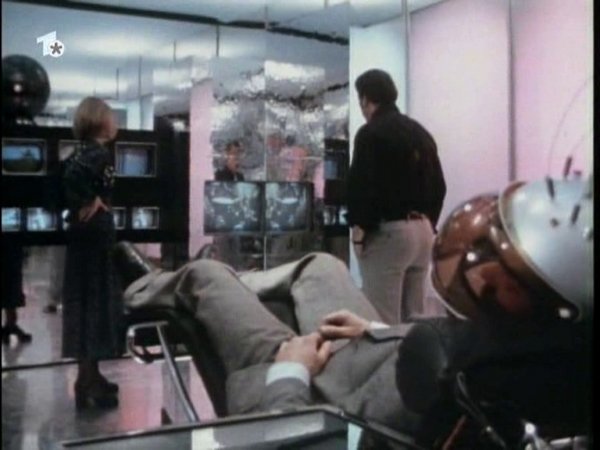
In Welt am Draht (World on a Wire), going into a simulation is referred to as “going downstairs” while coming out is “going upstairs.”
Overview: You think you might have seen every VR-based movie, or know what to expect after watching The Matrix or Lawnmower Man for the thousandth time. Then someone points you to some rare foreign TV miniseries, and suddenly… WHOA! The Matrix doesn’t seem so original anymore, at least in terms of concept.
Transmit ACK signal to “virtual reality 91″ for mentioning this one (just needed some time to research and download). World on a Wire is a two-part TV movie originally called Welt am Draht when it first premiered in West Germany. Since then, other VR movies short and long have come and gone. While still available via file-sharing and torrent, a recently restored version has been appearing at film festivals world wide and a Blu-Ray version is set to drop this month.
The Story: At The Institute for Kybernetik und Zukunftsforschung (Institute for Cybernetics and Future Sciences), or IKZ, Professor Henry Vollmer has created a simulated world containing some 8,000 “identity units”; Virtual humans not knowing that they are living in a simulation, except for the “contact unit” named Einstein who is needed to keep the simulation running. Vollmer tries to tell security chief Lause about a discovery regarding the simulation that he wants to keep secret “Because it would mean the end of this world.” Vollmer dies shortly after and Stiller takes over as the project’s technical director. At a party, Lause wants to tell Stiller what Vollmer had told him, but while Stiller is momentarily distracted Lause vanishes, and every one else suddenly has no memory of him, including Lause’s niece, Eva Vollmer. When one of the identity units tries to commit suicide it is deleted, prompting Stiller to “enter” the simulation to contact Einstein to find out why the unit tried to kill itself. When they meet again, Einstein is in Walfang’s body where he explains how he wants to be human… and how “reality” as Stiller knows it isn’t.
German Engineering. So the Simulacron computer system isn’t exactly 21st centruy, bleeding edge technology. This is a 1970’s era movie after all. So there’s no fancy gun-fu shootouts with CGI enhanced slow-motion effects, rotoscoped armor to guard against laser-edged Frisbees, or pixelated sex between Unix GUI daemons.
But Welt am Draht isn’t about fancy high tech special effects. It’s about one man’s reaction when he discovers the truth about reality… his reality, as he perceives it. We watch Stiller’s struggle to keep his sanity in a world that seems to be designed for the purpose of destroying him. A Kafkaesque nightmare encoded in silicon, and his attempt to escape it. And if he does escape, has he really escaped… or just entered a new level of the nightmare?
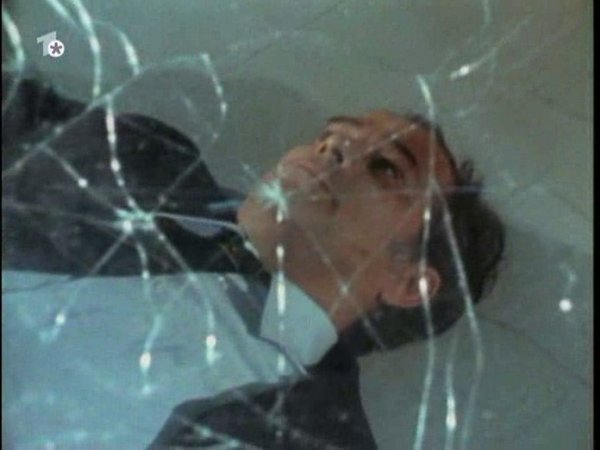
What we see now is like a dim image in a mirror. Then we shall see face to face.
Mirror’s edge. The main effect of the movie, especially in part one, is a shot of an image in a mirror or similar reflective surface. This gives an extra disorienting feeling as we ponder if reality really is reality, and how do they manage to get all those mirror-shots without the film crew appearing in the reflections. Low tech, highly effective.
But unless you can speak German well enough, you might miss some of the mirror-shots while trying to read the subtitles. That’s the only thing keeping this from being a perfect 10. Then again, subtitles probably would be better than dubbing that comes out as “all your wiener schnitzel are belong to us.”

Is it live? Or is it simulated?
Conclusion: From the country that gave the world cruise and ballistic missiles, Fahrvergnügen, and Kraftwerk, Germany shows that they can come up with some inventive… and scary… technology. Welt am Draht is one of those rare pre-cyberpunk cyberpunk movies that needs to be seen to be believed. Especially when more recent films have aped the idea of VR with high-end graphic trickery, this one is enough proof that high-end does not mean high-quality.
Movie Review By: Mr. Roboto
Year: 2009
Directed & Written by: Mark Neveldine & Brian Taylor
IMDB Reference
Degree of Cyberpunk Visuals: High
Correlation to Cyberpunk Themes: Very High
Key Cast Members:
Kable/John Tillman: Gerard Buttler
Simon Silverton: Logan Lerman
Ken Castle: Michael C. Hall
Humanz Brother: Chris ‘Ludacris’ Bridges
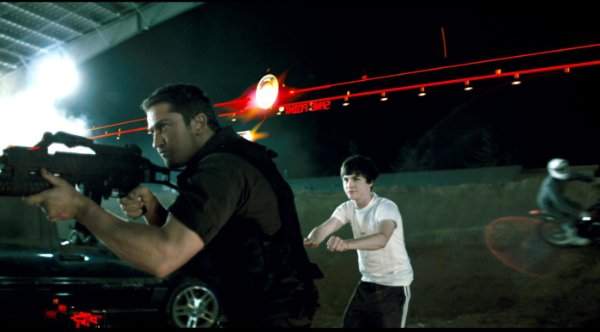
Are you the player… or the played?
Overview. At first glance, Gamer would seem to be about first-person shooters (FPSs) taken to new extremes… and the people who play them. Beneath all the explosions, spent bullet casings, and piles of fragged corpses, there’s a story about how one man is using nanotechnology for more than just sick entertainment. While the concept of technology to control humanity is nothing new to cyberpunk, how it is being used to that end in this movie may make you look at Quake and Unreal Tournament (and maybe The Sims series and Second Life) differently.
The Story. Ken Castle is the mastermind behind Nanex, the nanotechnology that fuses to human neurons in the brain to effectively control it. With this level of control, one person can make a Nanex-infused human his/her personal meatbot-slave. This results in the creation of the two largest, most successful live-action MMORPGs: Society, a Sims style RPG, and Slayers, the FPS where convicted death-row inmates fight to survive thirty matches where they win their freedom.
Kable, convicted of murder and separated from his wife and daughter, has won 26 matches already, thanks in part to his “controller” Simon. Kable has become a virtual god worshiped by the world, while Simon has become a rock star equivalent. But as Kable closes in on his 30th victory, a hacker group called the Humanz inform the duo that Kable’s appearance in Slayers is no accident as he hold information that can bring Castle’s empire down.
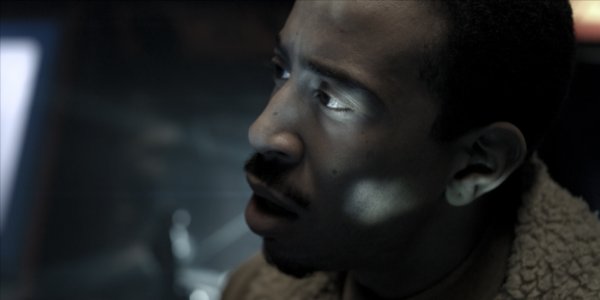
“This is not something you can control. It ain’t just a game, we’re all slaves.”
Who’s playing you? The potential danger of Nanex becomes all too obvious near the end of the movie, with Castle seeking godlike status. The immediate problems can be seen as Angie (Kable’s wife) is often seen as a Society meatbot to a controller who… let’s just say that which once seen cannot be unseen.

Kable: “You pull all the strings around here.”
Castle: “I think it, you do it.”
As if to drive the point of control home, you should see the “Under My Skin” scene with Castle and some of this personal meatbots doing a little song and dance for visiting Kable, a’ la West Side Story.
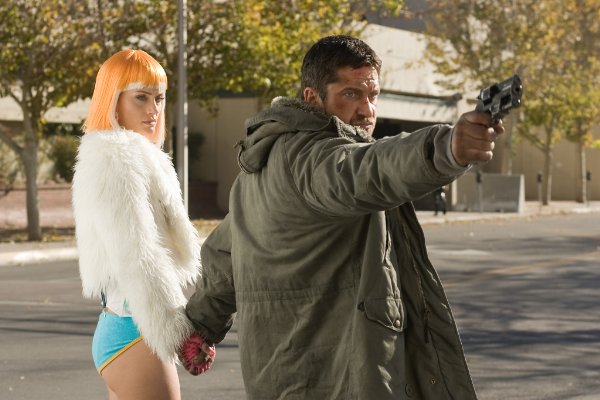
Also worth noting: The contrast of the bright neon-and-flesh colors of Society vs. the blood-drenched gray war zones of Slayers.
Conclusion. Some people might love watching meatbots fight for their freedom. Some might be turned away from the movie’s explosive (literally) battle scenes. But if you look past the blasts, you can see how it makes for a pretty good cyberpunk film.
And if you don’t think meatbots are possible, you should take a quick look at this article from 2006…
Movie Review By: SFAM
Year: 2003
Directed by: Andy & Larry Wachowski
Written by: Andy & Larry Wachowski
IMDB Reference
Degree of Cyberpunk Visuals: Very High
Correlation to Cyberpunk Themes: Very High
Key Cast Members:
Neo: Keanu Reeves
Trinity: Carrie-Anne Moss
Morpheus: Laurence Fishburne
Mr. Smith: Hugo Weaving
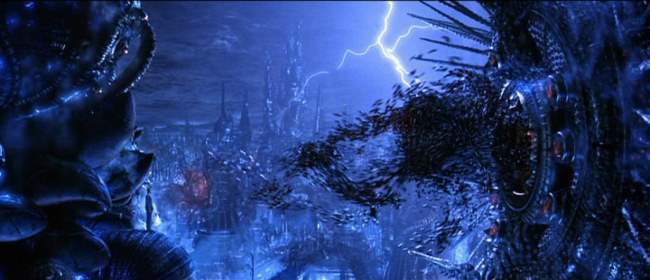
Overview: Yes, the majority of the population was disappointed with Matrix Revolutions. Many voiced issues with various movie aspects such as dialogue and acting. More still complained that the overall story was non-sensical, with many points seemly completely incoherent. Some even commented that even though it was incoherent, they absolutely loved the action sequences. Personally, I found an altogether different movie. At times I almost felt Matrix Revolutions was purposely written for someone exactly like me. My background in cybernetics seemed wonderfully tailored to understanding the trilogy from a science fiction perspective (versus the philosophical perspective that is most often explored) – as rarely do I find a symbolic struggle of positive and negative feedback systems so overtly played out in film. Strangely enough, many others tend to have this same sentiment (that the movie was MADE for them), although their backgrounds are very different from mine. In this sense, for those that LOVED Matrix Revolutions, something about the movie just “clicked” for them – in most cases, that special something was different for each person. While yes, the action is astounding, as are the visuals, its this aspect of Matrix Revolutions which is most intriguing to me. It may not be for everyone, but for those that like it, its almost tailor made.
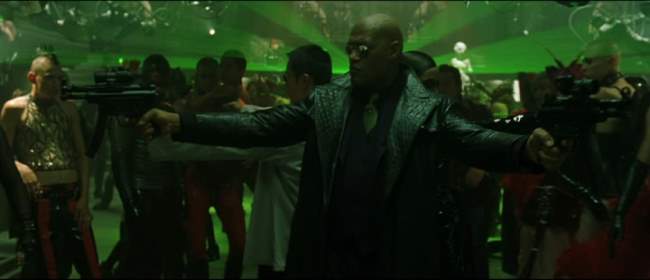
The Story: Matrix Revolutions is the third installment of the Matrix Trilogy, where Neo’s decision at the end of Reloaded causes a final confrontation between Zion and the Machines. In rejecting the Architect’s control system, Neo has thrown the relationship between humanity and the machines in a completely unpredictable direction. The machines are quickly digging to reach the last human city of Zion, while Neo, Morpheus, Trinity and a host of others look to recover from their last ditch attempt meeting with the Architect at the end of Reloaded.
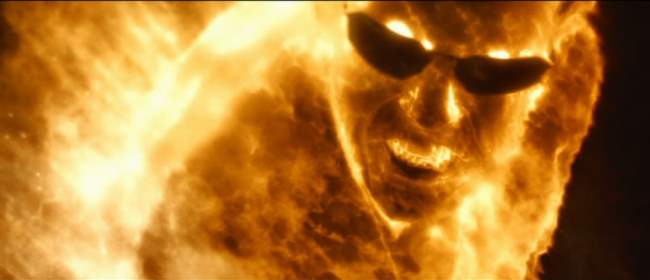
Nothing was at it seemed. The history of the one was a lie, all part of an elaborate control system. Now, in less than twenty hours, the machines will penetrate Zion’s defenses, and potentially destroy humanity forever. Worse, Neo’s mind has somehow separated from his body and now lies comatose next to Bane on-board the Ship called the Hammer. Morpheus is still despondent about the false prophecy, and the Zion’s defenses have been all but wiped out by a premature EMP pulse.
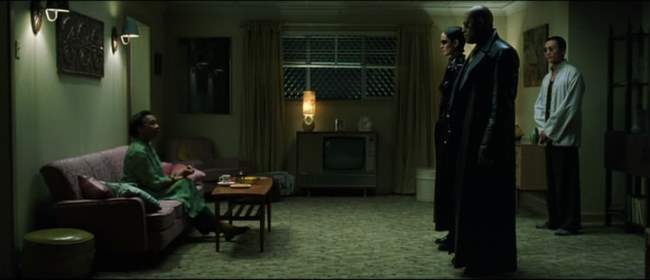
It turns out that Neo’s mind has been trapped in a place in-between the Matrix and the Machine City, inside something called the Mobile Avenue Train Station (better known as limbo, which is an anagram for “Mobile” Avenue). Unfortunately, this is controlled by the Merovingian. Trinity and Morpheus, along with Seraph must now convince the Merovingian to let Neo Free. Meanwhile, Mr. Smith has virtually taken over the Matrix with duplicates of himself while Zion prepares for the attack of the Machines, and decide to place virtually all their resources into holding the dock. As things become clear, Neo decides the only way he can save Zion is to personally go to the virtually impenetrable Machine City. Meanwhile, as the Dock Fight goes from bad to worse, Niaobi (Jada Pinkett Smith), Morpheus and company race back in the Hammer to help save Zion with the humanity’s last remaining EMP.
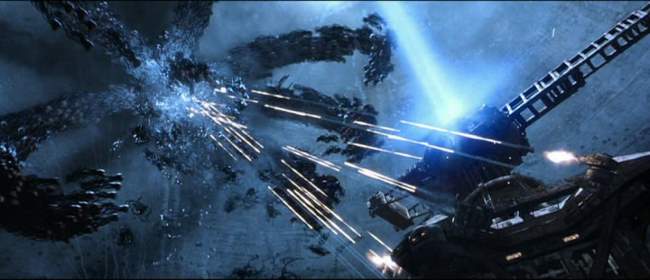
Revolutions is a War Movie: Whereas the first movie, the Matrix involved a personal awakening, and Matrix Reloaded was almost more of a chase movie, Matrix Revolutions is more a war movie than anything else. In this sense, each of the three movies are very different from one another. Many new characters are introduced in Revolutions, while some of the staples of the first two movies take more of a back seat. We see less of Morpheus here, for instance, but are almost bombarded with a myriad of secondary characters, each intended to bring us a sense of drama associated with the enormity of their undertaking. While one can discuss how well each of the minor characters worked, the need for their inclusion is rather clear – without them, the scale of the conflict doesn’t really work.

The Matrix Trilogy as a Participative Movie Watching Experience: Most movies are meant to be conveyed in a rather passive manner – one which may require the view to actively pay attention to what transpires but doesn’t require them to actively think about what they have seen. Conversely, quite a few cyberpunk flicks are just the opposite – animes like Serial Experiments Lain or Fragile Machine, extreme Japanse Cyberpunk flicks like Tetsuo, indie flicks like Puzzlehead, or even action flicks like Casshern all require the viewer to spend significant time actively thinking through the implications of what they just saw. The Matrix Trilogy, and especially Matrix Revolutions flat out requires active participation to make sense of it. Arguments abound on this point as many critics consider this a sign of bad movie making, while many Matrix fans respond with the inevitable, “You just don’t get it” comment, as if those who hate Revolutions are somehow intellectually inferior. My take on this is that this is more a sign of preference in movie tastes. Some people (like me) LOVE to encounter movies that take more than one viewing to really understand, whereas others absolutely hate watching films like this. Regardless where you come down on this, your perception of whether you like Revolutions or not will in large part be answered by your preferences on this scale.
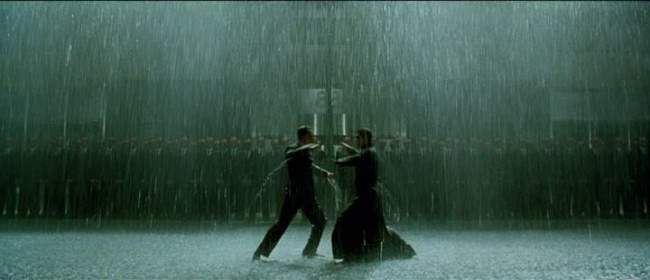
The Power of The One: The Oracle makes clear in her meeting with Neo that the “power of the one” comes from the Source, and that this power is necessary to communicate with the source. From a SciFi standpoint, the explanation for this is clear – the power of the one is based on the sentient learning program embedded in Neo from birth (the Architect tells Neo this at the end of Reloaded). As is documented in my Man-Machine-Interface essay, this is what gives Neo the power to attack the machines in the real world. Neo has Sysadmin-like powers so that he (the sentient program portion of Neo) is able to reboot the Matrix.

Getting Back to a Steady State: In Reloaded, Neo, with significant prompting from the Oracle has effectively wiped out the Architect’s negative feedback control system (meaning a cybernetic control system that “negates change from an initial goal state). The thresholds were exceeded, and the entire control system spun out of control. This, after all was the Oracle’s purpose. From a cybernetic perspective, the Oracle’s goal was to create a positive feedback loop (increasing change from an initial goal state). In doing so, she effected the complete destruction of the negative feedback system that had managed human-machine relations for the better part of 600-800 years. When a cybernetic control system exceeds its thresholds, it is possible for the system to again regain a steady-state, but almost never is it possible to return to the previous steady state. This truly is the Oracle’s purpose. By effecting out-of-control change (by creating the anomaly that is Mr. Smith), the Oracle created a situation where both the humans and machines would need to work together to stave off elimination of their species. The proposed steady state (peace) would have to be founded on a completely different set of assumptions. This would necessitate changes in the operation of the Matrix, and a far more integral relationship between the humans and machines.
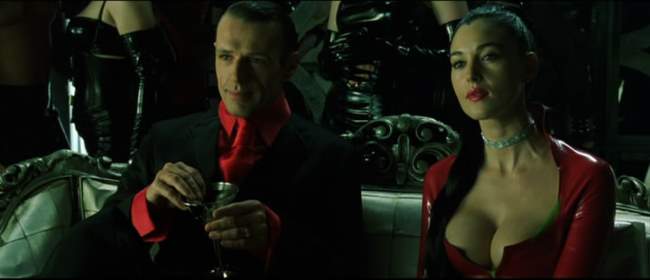
The Philosophical Aspects: Matrix Revolutions, even moreso than the previous films, is replete with interesting philosophical references from Hinduism, Christianity and various writers that ideas such as freewill and determinism, the nature of reality, the notion of purpose, and so on. In totality, the Matrix is a virtual cornucopia of ideas which ends up leading towards a larger integration of purpose, one which serves to unite the needs of man and machine in their struggle to survive. That these ideas are melded into a very compelling story – one which can almost completely divorce itself from the SciFi aspects and still work is pretty amazing. One can easily view the trilogy from the perspective of Neo as a messianic figure who’s story arc involves the coming of age, the sheding the bonds of slavery, and eventually the recapturing of humanity’s (and the machine’s) salvation. The Matrix Trilogy is one of the very few movies which have spurned an ever increasing number of philosophical analysis books – truly this is rather unique, and itself something to be celebrated.
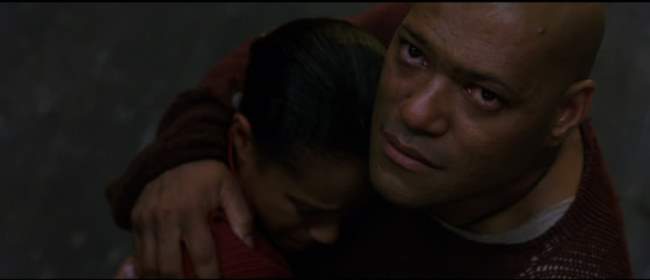
The Acting: While much has been said about some uneven performances, by and large, the leads in Matrix Revolutions turn in very solid performances. Keanu Reeves deserves additional credit for the incredible work he in preparation for the part – his martial arts and wire work in Revolutions are just terrific. Hugo Weaving turned in a supporting performance worthy of what I would consider an Oscar nomination. His monologue (“Why Neo, why?) near the end is absolutely riveting. However some of the secondary actors, most notably the “kid” (Clayton Watson) were pretty bad. Also, there were some dialogue issues in Revolutions which could have been worked a bit more (shortening the Trinity “you gave me one more chance” scene, for instance). In light of the incredibly ambitious goals for Matrix Revolutions, its not too surprising that some of the details could have been worked more.
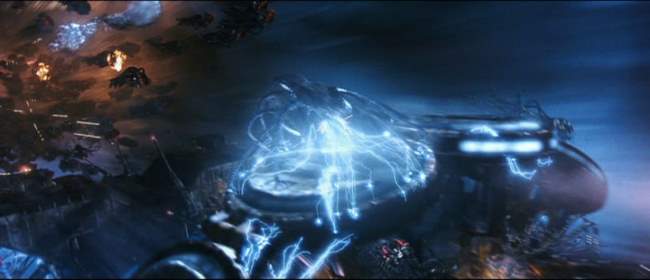
The FX: Matrix Revolutions has some of the most impressive FX on film. Regardless whether or not you hate the film, the quality and enormity of the FX we see in Revolutions is a wonderful cap to the series. From an FX standpoint, the Dock Fight was an absolutely monumental undertaking. This combination of CG, miniatures, full-sized models with human actors, and motion-capture provided one of the great battles ever seen on film. Because of the speed and chaos, like many elements in Revolutions, it really does take an extra watching or two to really get the sense of what’s happening. But once you aren’t overwhelmed by the enormity of it, the pace of the battle and the actions of the machines make sense. In fact, it becomes clear that the dock fight is one of the most significantly choreographed combat scenes ever put on film.
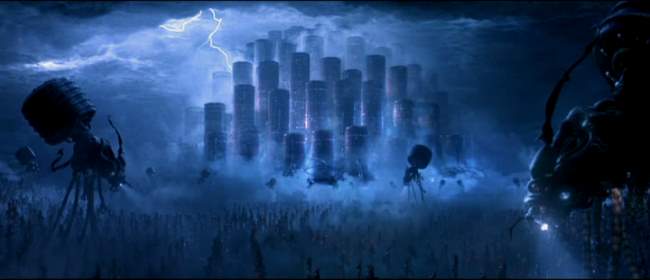
The Visuals: Visually, Matrix Revolutions is a stunning movie. While the bulk of the visuals use a blue-red color sceme, the familiar green matrix colors are also prominently displayed. Similarly, we get bursts of yellow-orange colors denoting machines disconnected from the Matrix. Shadows are liberally used in the larger panoramic scenes, while many of the close-ups are more starkly lit. Overall, the mood of the blue-red color scheme is reminiscent of Star Wars’ Empire Strikes Back, in that we get the same darkened atmosphere.
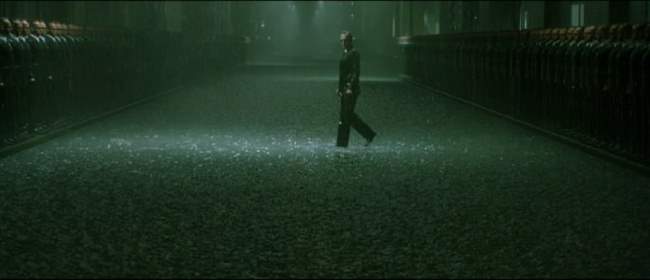
The Score: Don Davis’ music for Matrix Revolutions provided a terrific accompaniment. The diversity, from industrial sounds to haunting choral arrangements served to heighten the tension and energy at pivotal scenes. Probably the highlight of this was at the beginning of the Super Burly Brawl between Neo and Mr. Smith where the piece, “Neodammerung” signals the final confrontation.
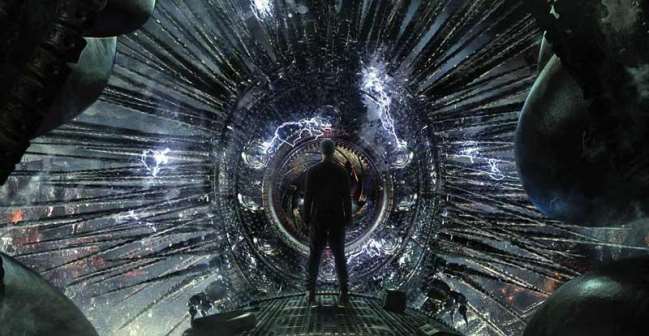
The Bottom Line: The Matrix Trilogy is one of the most ambitious projects ever undertaken in movies. It combines almost two distinct storylines – one based on philosophy and religion and the other based on science fiction – with revolutionary effects, great action and truly interesting ideas throughout. As a cyberpunk dystopia, it’s hard to find a situation worse than the one posed in the world of the Matrix. While the majority of its viewers found fault with Revolutions, especially the ending, I personally found enormous satisfaction out of both the ending and the movie as a whole. While I certainly agree that there are some acting and dialogue issues, as a whole, Revolutions was a terrific ending an absolutely terrific trilogy.
Matrix Revolutions Page 2: More Screencaps –>>
~See movies similar to this one~
Movie Review By: SFAM
Year: 2002
Directed by: Kenji Kamiyama
Written by: Masamune Shirow (Story), Kenji Kamiyama (Chief Writer), et al.
IMDB Reference
Degree of Cyberpunk Visuals: High
Correlation to Cyberpunk Themes: Very High
Key Cast Members:
- Major Motoko Kusanagi: Atsuko Tanaka (Japanese), Mary McGlynn (English)
- Batou: Akio Otsuka (Japanese), Richard Epcar (English)
- Chief Daisuke Aramaki: Osamu Saka (Japanese), William Knight (English)
- Ishikawa: Yutaka Nakano (Japanese), Michael McCarty (English)
Rating: 9 out of 10
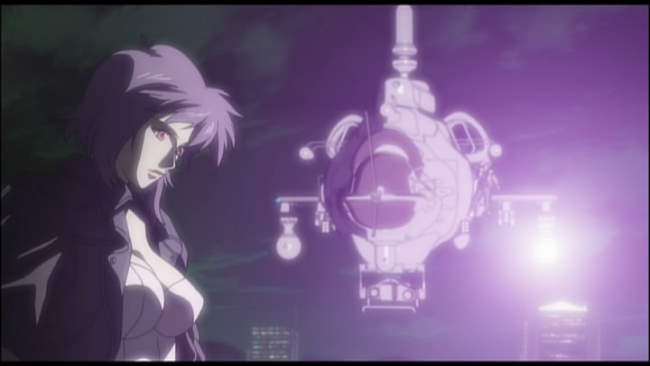
Overview: Ghost in the Shell Stand Alone Complex (GITS SAC) uses the same characters as Masume Shirow and Mamoru Oshii, but takes place prior to the first GITS movie. Like the GITS movies, GITS SAC revolves around Section 9, an elite anti-terror police force that works behind the scenes to keep the peace. The overall tenor of this series is far more action oriented than Oshii’s movies. While there are a few philosophy moments (including a terrific one with Batou and the Tachikomas), the vast majority of the season is action oriented. In short, we get high-end, slick cyberpunk butt-kicking in GITS SAC – one that’s well worth watching, even if you do miss the philosophy.

The Laughing Man Story: In a world where cyberization has become the norm for a large segment of the population, a number of negative side effects have become possible. In addition to cyberbrain hacking, a disease called Cyberbrain Sclerosis has emerged which seems to randomly affect many who’ve undergone significant cyberization. The Mega-corporation, Serano Genomics has produced a cure for Cyberbrain Sclerosis – Serano Micromachines, a nanotech implant device that, when ingested regularly supposedly halts and eventually works to cure the disease. Unfortunately, the Micromachines only seem to help a small segment of those contracting the disease. A hacker named the Laughing Man seems bent on exposing a cover-up – one which posits that the lost Murai Vaccine has an almost permanent curative for those with Cyberbrain Sclerosis. Unfortunately for Serano Genomics, a real cure for Cyberbrain Sclerosis would decimate their profitability.
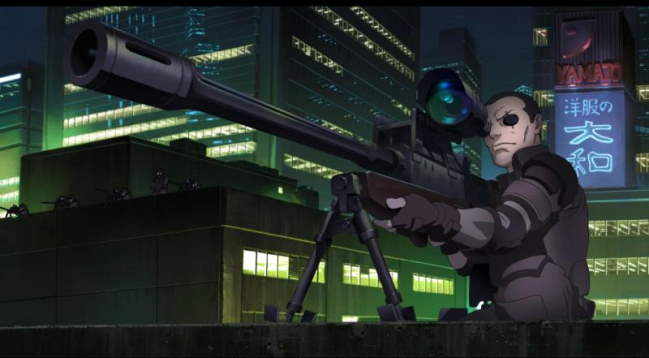
The Laughing Man is a hacker extraordinaire who is able to hack into cyberbrains at will, and worse for public confidence, is able to take over TV shows at will. Section 9 has been brought in to find and stop the terrorist known as the Laughing Man. Throughout the season, while there are side plots, it’s the Laughing Man story which drives Section 9. As it continues, the intrigue builds and the plot thickens. Eventually, corporate betrayal, political scandals and personal vendettas play a role in setting the context and exposing the larger truth.
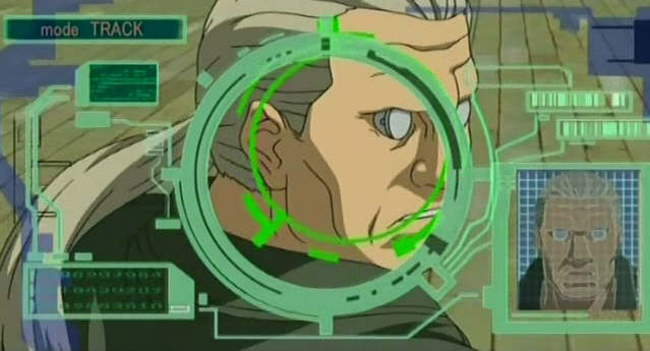
The Side Stories: While the Laughing Man is the focus of the season, there are many side quests in GITS SAC. Some of the episodes closely resemble stories from Masume Shirow’s original GITS Graphic Novel. Among these, Batou has an interesting commando encounter with his past, and Aramaki is taken prisoner by thieves in a bank, only to get involved in a more intriguing plot. For him to survive, Motoko must be able to interpret his actions from afar to correctly figure out his strategy. Generally, the stand-alone episodes are good enough to keep you entertained – some are excellent.
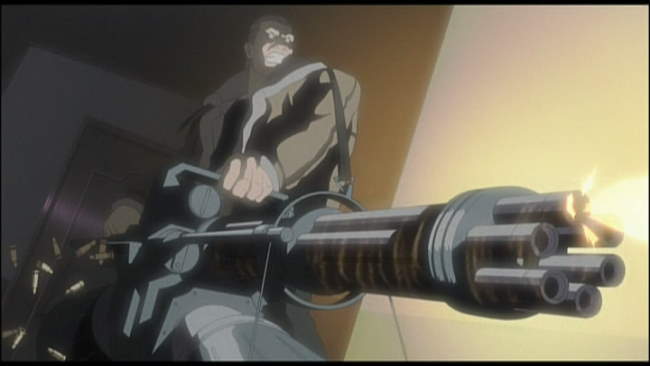
7Th Volume is the Best: While GITS SAC is pretty good throughout the series, the 7th volume – the last one – is by far the best. Without the 7th volume, I would probably rate GITS SAC 8 stars, but the 7th volume really deserves a 10 star rating. In the 7th volume, Section 9 is disbanded, while political intrigue hounds their very lives. The team escapes a crack commando unit and then all go their separate ways. Motoko and Batou become the focus of the volume, and in doing so, display more humanity and feeling then they do the rest of the series. On top of this, many of the best FX are found in volume 7.
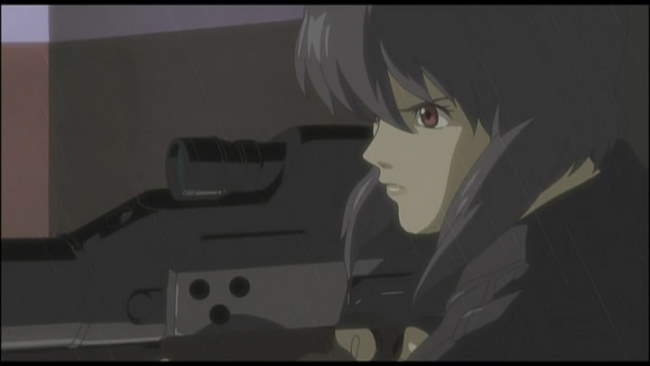
Differences with Oshii and Similarities with Shirow: Whereas Mamoru Oshii’s movies centered on the impacts of a cyberpunked society to the individual (Motoko in GITS, and Batou in GITS: Innocence), GITS SAC tends to broaden the filter to look at overall patterns in society. This leads to wonderful throw-away gems like the virtual meeting room (basically a holodeck) where everyone jacks into the meeting and then disappears when complete. We also get plots centering on problems with children in this changed new society, alienation of the masses, and loss of identity and humanity as technology takes center stage in human interaction. GITS SAC is also far more like Masume Shirow’s original graphic novel. While it doesn’t have the overt sexuality of Shirow’s work, Motoko is drawn as Shirow would; Shirow’s humor is evident in a number of the episodes; and the action takes center stage for the most part.
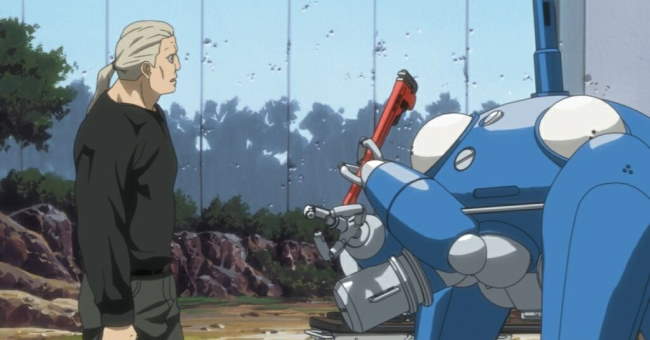
The Tachikomas: Early on, Major Motoko Kusanagi determined that the Tachikomas weren’t destined to be front-line fighting droids. For this reason, in order to become useful, the Tachikomas sped up their learning AI processing. As the season progresses, the Tachikomas begin to exhibit full signs of sentience, including Freewill and more devious functioning – so much so that Motoko becomes worried about their potential. Many interesting discussions take place over the development of the Tachikomas. One of the more intriguing ones that wasn’t really answered was whether being a digital life form instead of an analog one, would the Tachikomas ever develop a Ghost?
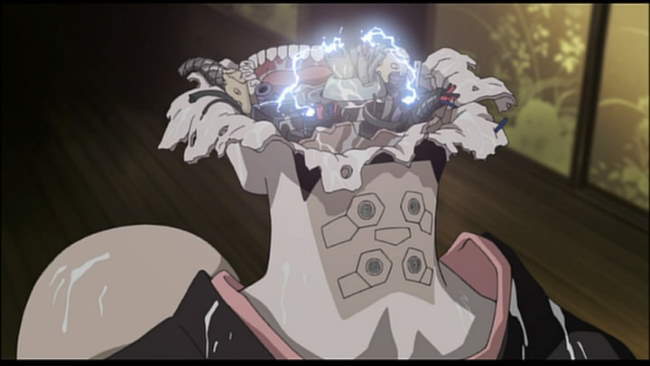
External Memory Devices and Cyberbrains – Augmented Thinking: One of the really interesting things about the GITS world is the integration of augmented brains. Conversations and complex thinking become dramatically enhanced. While the philosophical conversations are significantly reduced in GITS SAC when compared to the GITS movies, we still get a myriad of instances where cyberbrains allow people to call up a set of details about any subject that no other human could ever do. Cyberbrains in GITS SAC show a society where humanity truly has become post-human in a very real way, even though the actual look of most humans hasn’t changed much.
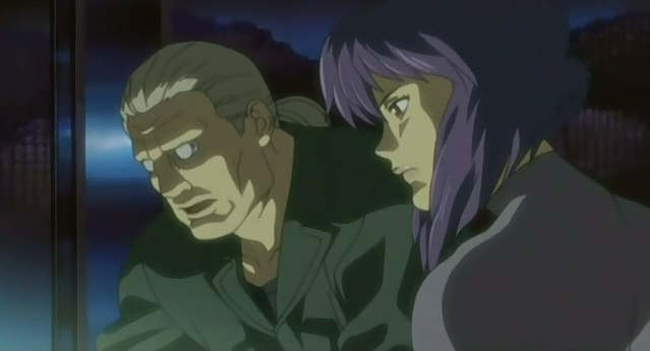
The Dubbing: GITS SAC is one of the few animes where the English cast is just about as good as the Japanese cast. Both William Knight (Aramaki) and Richard Epcar have been in their roles from the initial Ghost in the Shell movie in 1995, and all of the cast members have stayed consisted for both GITS Innocence and GITS SAC. Atsuko Tanaka (Motoko), Akio Ôtsuka (Batou), and Kôichi Yamadera (Togusa) have also been in their roles since 1995. It’s hard to pass up on Atsuko Tanaka though – I love her as Motoko. In any event, while the moods between the English and Japanese cast are different, they are both excellent.
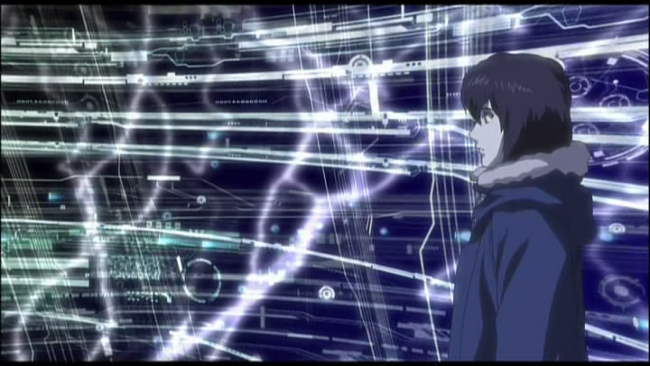
The Sound: GITS SAC consistently has decent quality sound supporting the visuals. The use of the side speakers for voices is especially emphasized. The sound FX (explosions, gun shots, car chases) are always top notch. But truly, the most impressive thing in terms of sound is the sound track. The opening and closing songs (Inner Universe and Lithium Flower) by Yoko Kanno are flat out terrific. Throughout, we are treated to a variety of songs and background music, which almost always add to the action and visuals on screen.
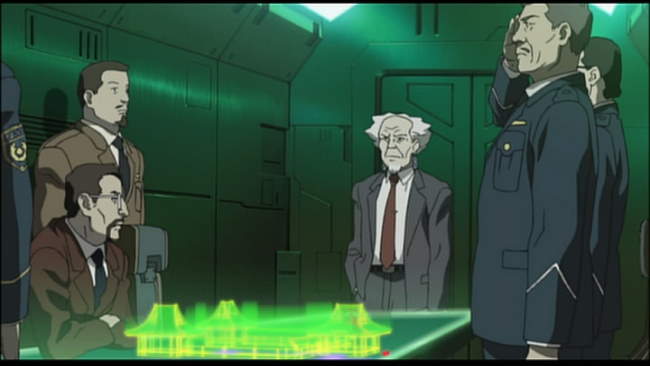
The Visuals: GITS SAC has a variety of aids that add to the overall quality of the look. While some shots look pretty basic, others involve a variety of cool FX, including digital color grading, a myriad of environmental effects, and cell-shaded computer models. GITS SAC gives us a variety of color palettes including dominant greens, reds and blacks, and occasional blues and yellows. Overall, GITS SAC is a very professional, high quality production.
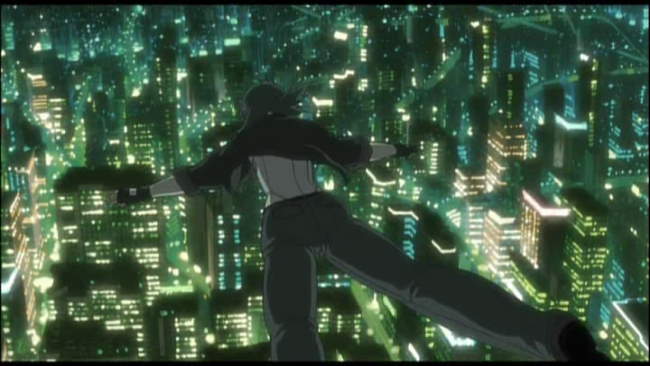
The Bottom Line: GITS SAC is a high quality cyberpunk production. While I personally like the tone and tenor of Oshii’s movies far more than I do GITS SAC, this is a personal preference. GITS SAC provides continued quality action wrapped up in impressive visuals and sound. While the first 6 volumes might only merit an 8 star rating, the conclusion is just terrific. This, along with the overall high level crafting GITS SAC provides throughout (visuals, sound, dubbing, songs) certainly raises the bar. And do yourself a favor – watch GITS SAC on a system with high quality surround sound – you’ll notice the difference.
Movie Review By: SFAM
Year: 2005
Directed by: Ben Steele
Written by: Darren Dugan, John Pinckney, & Ben Steele
IMDB Reference
Degree of Cyberpunk Visuals: Very High
Correlation to Cyberpunk Themes: Very High
Key Cast Members:
Leda Nea: Xi
Goho, Mary Nea: Molly Pinckney
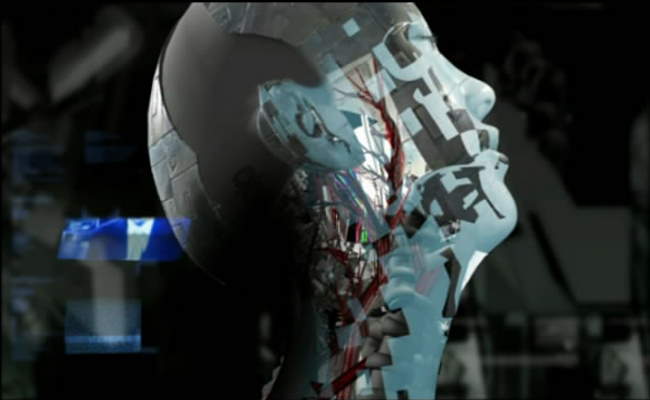
Fragile Machine - a Cyberpunk Operetta: If there was ever such a thing as a cyberpunk operetta, Fragile Machine is it. Fragile Machine is an indie anime film short created by a very small organization of talented artists called Aoineko. Fragile Machine’s narrative is largely told through haunting Chinese and English vocals set to a rhythmic, keyboard-laden techno beat (you can hear the main track by clicking on the aoineko link above). The combination of mind-expanding surreal android images with Aoineko’s music provides an intensely immersive experience – one which slowly envelopes your senses until you are a participant on Leda Nea’s journey. Fragile Machine is divided into six distinct chapters, and is narrated by a small android girl named Goho.
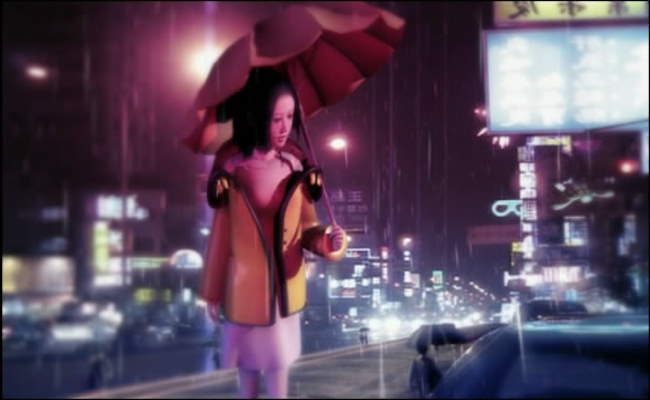
The Story: Leda Nea, a lead scientist heading up android firm, Göln Remedios’ Project Zero, is distraught over the death of her daughter, Mary. She no longer is interested in living, and decides to sign away her rights to be become a test subject for Project Zero. Leda Nea agrees to have her consciousness inserted into an android body, but the experiment goes horribly wrong, and Nea’s consciousness is permanently trapped in the android. A year goes by and Leda Nea becomes Göln Remedios’ primary work. Leda Nea has lost all sense of her former life, but still realizes she is trapped in a antiseptic prison – one which she desperately wants to escape.
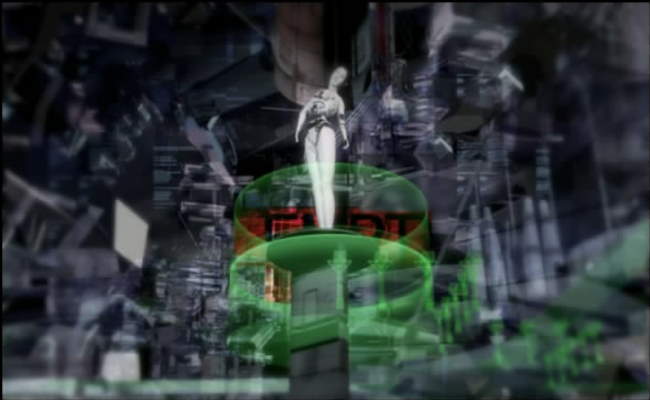
Eventually Leda Nea finds a way to trick her captors by using some of the android shells as decoys. Allthough still pursued by Göln Remedios’ droids, she escapes to the woods, and, surrounded by nature, begins to remember her humanity. In doing so, Leda Nea remembers that she hates herself and her very existence, and finally begins to remember the daughter she has lost. She continues to be pursued by Göln Remedios’ drones, but instead of getting captured she throws herself into a lake, and thus destroys her android body. At this point, her soul frees itself from its android host and embarks on an entirely new journey – one which could potentially provide Leda Nea salvation by connecting her back with that which she lost. While the ending chapter is visually astounding, I can’t go further without giving away the rest of the story.

A Post-modern Narrative: One one level, Fragile Machine appears to be a straightforward narrative in that it is explicitly divided into six chapters. Yet in watching this film, it becomes clear that the narrative is anything but straightforward. To understand the story, the viewer must pay close attention to the symbols, lyrics Goho’s commentaries, and the various visual indicators sprinkled throughout the film. While lasting just over 30 minutes, those interested in understanding the message will definitely benefit from giving Fragile Machine multiple viewings. The third time through, I found myself freezing the screen on a number of images in order to understand their significance. The story summary above is the result of watching Fragile Machine a number of times prior to piecing this all together. For instance, only very late in the film do you find out that Leda Nea is project manager of Project Zero, and is thus, responsible for her own destruction.
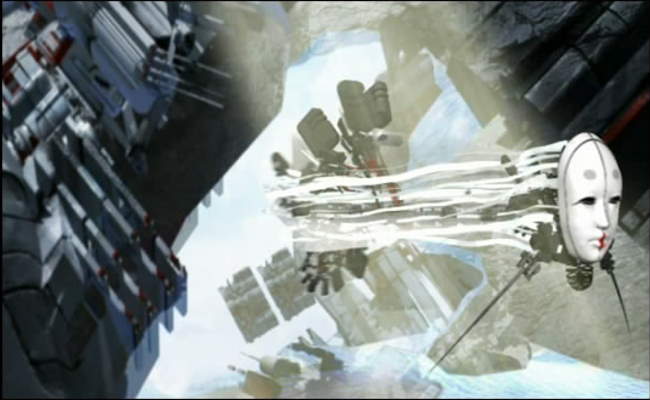
The Visuals: Even if you don’t care to spend time understanding the rich story and symbolism, Fragile Machine’s android visuals alone are well worth the cost of the DVD. Fragile Machine comes at man-machine integration and android creation and destruction from such a myriad of directions that it leaves the viewer in a state of wonderment. Through the film, color palettes are linked with the various symbols portrayed in Fragile Machine. Visual Homages are paid to a myriad of sources including Blade Runner, Metropolis, Ghost in the Shell and Planet of the Apes.

Animation Issues: While the artwork in Fragile Machine is intensely creative, the CG movement is definitely subpar when compared to some of the larger budget works. When Leda Nea is running, or the puppet narrator, Goho, is talking, the quality of the animation negatively affects the immersion. Depending on how you come to see Fragile Machine, this might be enough to turn you away from this incredible picture (perhaps this accounts for the insanely low score on IMDB). However, I would argue that the animation is only a minor knock in an otherwise perfect film short. In looking at the immensely small crew involved in making Fragile Machine, they pretty much nailed all aspects of this film that didn’t require massive CG animation engines. The post-modern story, the artwork and the music are all par excellence.
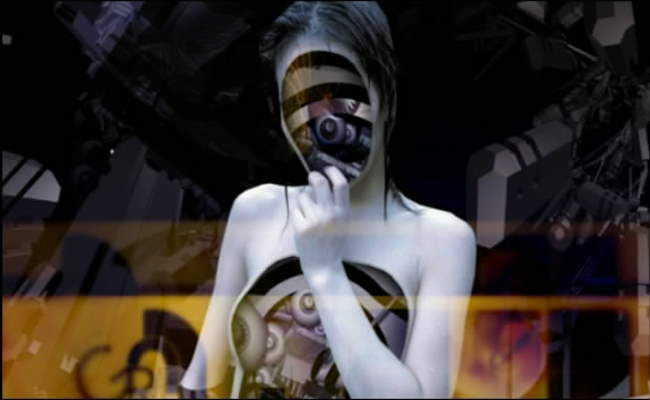
Interpreting Fragile Machine: Fragile Machine is visually and symbolically rich enough that the viewer can extract a number of fascinating thoughts. However, the larger point that Fragile Machine traces is a common cyberpunk theme - the idea that humans, in its pursuit of technology believes they will become omnipotent, with power over life and death itself. Yet in pursuing this course, we end up losing that which defines us – our humanity. Eventually, this pursuit of the taboo ends up destroying our very society. In a wonderful review of Fragile Machine, Jens points out that the corporation developing the androids, Göln Remedios, is visually similar to the Tower of Babel – both are stretching to the heavens in order to become God’s equal.
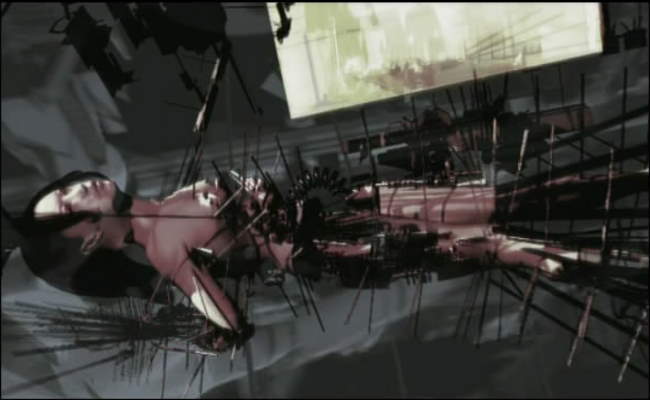
When we find out that Leda Nea is in fact the Lead for Project Zero, the emphathy shifts from a rather simplistic view Göln Remedios’ evil CEO figure being responsible to a far richer view. Leda Nea, in losing her daughter has lost her humanity, and thus no longer feels compelled to remain “human.” Her decent into subverting humanity starts well before she is captured in an android body. It begins with her work to build project zero – a project which at it core attempts to extract humanity and incarcerate it within a machine host. One almost wonders if Leda Nea initiated Project Zero in response to her daughter’s death. While the evil CEO is clearly interested in using Leda Nea as a tool in attaining virtual Godhood, it is Leda Nea who chooses to become the virtual fallen angel (as depicted by her red hue much of the time during her android descent). But ultimately, Fragile Machine becomes a story of redemption, as Leda Nea’s lost daughter, as represented by the elephant doll, becomes her guide towards finding ultimate salvation.
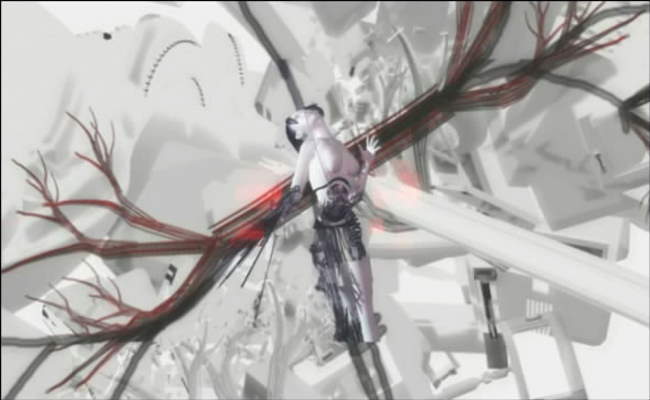
If an Android had a soul, what would happen to it when it dies? One of the more interesting questions Fragile Machine raises is the idea that if an android had a soul, what would happen when it dies? In pursuing this thought, Fragile Machine operates in the same territory as Ghost in the Shell, in which a human soul is essentially trapped within an android body. But the thought it raises can easily be taken farther than this: as we move ever closer towards sentient machines, what exactly becomes the difference between machines and humans? If machines become sentient, could they not also develop a soul? And if so, can this soul exist in some fashion even after its host has died?
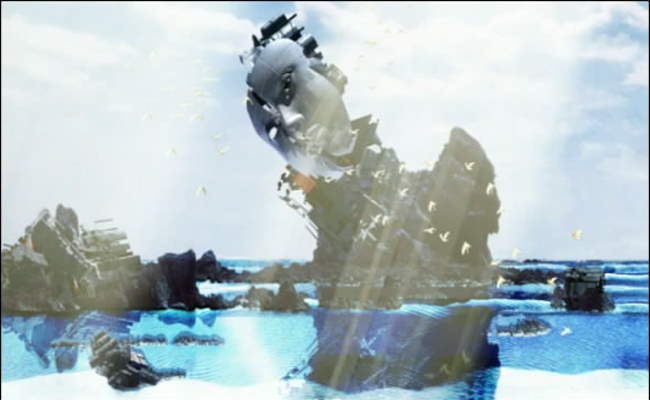
What Does a Human Mask Represent? Similar to f8, Fragile Machine uses a mask of a human-looking face to represent the attainment of humanity. Only in this case, the mask represents humanity’s technology enabled drive to create post-humanity – androids in our own image. Interestingly, this interpretation masks when viewing the last chapter of Fragile Machine leads to an interesting conclusion about the pursuit of post-humans. One wonders whether it is possible to pursue sentient androids in a way that does not explicitly challenge God’s (or nature’s) sacred role over life and death. Fragile Machine almost seems to be advocating an evolutionary, emergent approach over an overt, dominating, dehumanizing approach.
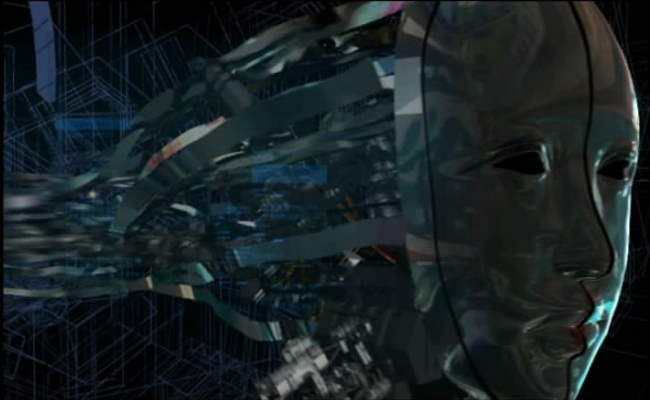
The Bottom Line: Rarely do we encounter a film so creative in its development, where the sounds and visuals are inexorably linked in expressing such an interesting story. While the animation isn’t on par with larger scale productions, the songs and visuals more than make up for it. In totality, Fragile Machine conveys a complex, multi-layered story that is rich in symbols and ideas. This is truly a piece of cyberpunk art not to be missed. The DVD was out of print but is available again (see in the comments section for details). Give it a try if you’re looking for something different.
Spoiler Alert! Page 2 has more screencaps, but some relate to the ending –>>
~See movies similar to this one~
Movie Review By: SFAM
Year: 2003
Directed by: Andy & Larry Wachowski
Written by: Andy & Larry Wachowski
IMDB Reference
Degree of Cyberpunk Visuals: Very High
Correlation to Cyberpunk Themes: High
Key Cast Members:
Neo: Keanu Reeves
Morpheus: Laurence Fishburne
Trinity: Carrie-Anne Moss
Agent Smith: Hugo Weaving
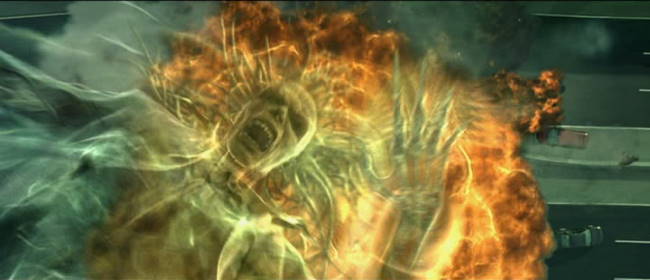
Overview: Matrix Reloaded, one of the most anticipated movies of 2003 provides a very interesting follow-up to one of the best, most influential movies in cyberpunk and all of Sci-Fi. Many have knocked this (and Revolutions more) for being a significant step down from the original movie, and to an extent they are in that the “newness” of the idea has worn off. But truly, it would be absurd to expect the Wachowskis to not use the universe they have already painstakingly created. In this sense, the sequels HAVE to provide a different sensation. In this sense, Reloaded does not disappoint. We get great performances by the Matrix leads, along with a number of truly terrific supporting roles. For this review, I’ll try to concentrate my comments more on the Sci-Fi aspects of the movies versus the religious narrative, as this also covered wonderfully elsewhere. I’ve also tried to use less well known screencaps on the first page of this review. To see some of the more popular Reloaded screencaps, go to page 2 of this review. Also, this review goes in line with my more in-depth assessment of the trilogy from a SciFi perspective:
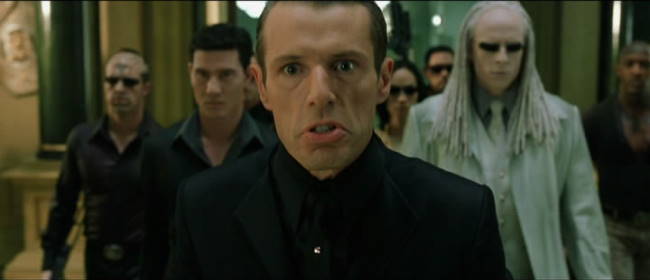
No “The Matrix Sucks/No It’s Great - You Just Don’t Understand!” Debates: Just a fair warning – if youre expecting Matrix sequel bashing, I’m afraid you’ve come to the wrong site. There are numerous places to read such banter if you’re interested. I absolutely love the sequels for a variety of reasons (some of which I explain below), but I really don’t mind in the least if you hate the sequels. Yet, for this movie, I’d really like the comments on this entry to be more related to the movie itself versus whether or not you hate the sequels. Believe me when I tell you I’ve participated in many more hours of discussion on this topic than I ever care to, and absolutely will not get into this in the comments section of this review. If you MUST engage in the “Matrix Sequels Suck/No - They’re Great, You Just Don’t Understand!” debate, please use this thread in the Meatspace.
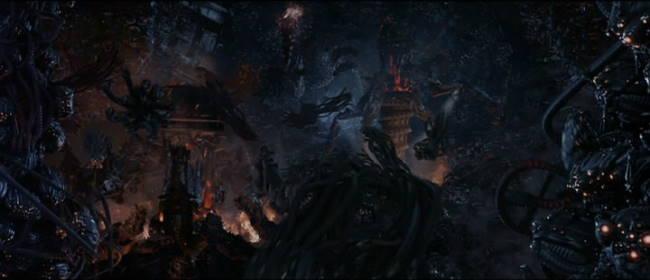
The Story: I’m going to go out on a limb here and guess that about 99.9% of you reading this review have already seen Reloaded, so I won’t spend much time on an overview of the story unless its specifically requested. In brief, Matrix Reloaded is the sequel to the Matrix, and is the second of three movies in the trilogy. In Reloaded, six months have past since the end of the Matrix, during which time, Morpheus, Neo and Trinity have been busting hump freeing massive numbers of battery people. In Reloaded, we get to see Zion, a return of Mr. Smith, and eventually, a fuller understanding of the nature of the Matrix and the Prophecy of the One.
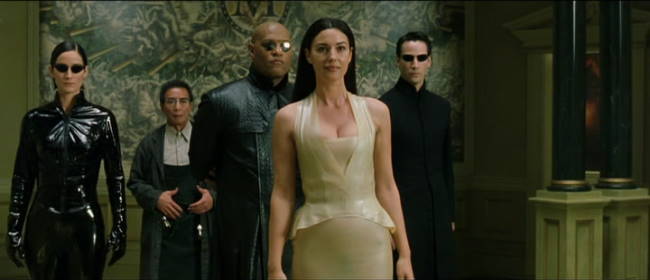
The Supporting Characters: One of the real strong points of Reloaded is the cool character additions. The best ones are of course the Merovingian (played magnificently by Lambert Wilson) and Persephone, played by the ultra-sexy Monica Bellucci in a totally hot see-through dress. When they are onscreen, both absolutely steal the scenes. Almost as terrific is the Architect (Helmut Bakaitis) and the blasé evil ghost twins (Adrian and Neil Rayment – who actually are twins) – they have to be up there as some of the best henchmen ever to grace the screen. Seraph (Collin Chou), Councilor Hamann (Anthony Zerbe), Link (Harold Perrineau), the Keymaker (Randall Duk Kim), and Niobe (Jada Pinkett Smith) all really add to the movie as well.
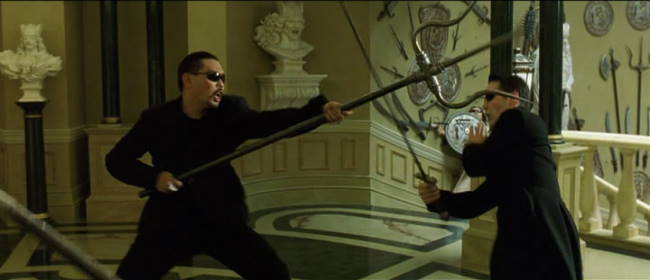
The Action: Reloaded is filled to the brim with awesome action scenes. In addition to some wonderful Woo-ping Yuen choreographed fights, we get one of the best highway chase scenes ever put on film. The Trinity motorcycle part in particular is just awesome. Truly though, serious credit has to go here to Keanu Reeves’ preparation and training for this film. By all accounts he was an absolute machine in terms of preparation. It really shows on screen. His wire work and martial arts scenes are just terrific (And no, I’m not comparing him to those in Hong Kong who’ve spent an entire career doing this stuff). The CG for the most part is absolutely top notch.

The Visuals: Matrix Reloaded has a lot more diversity in its visuals than the Matrix provided us. We have a few experimental shots like the graphic novel scene of Neo flying with the Moon behind him – and lots of yellows and greens. For yellows, we get rave scenes, explosions, and fights in a yellow weapons room. Greens, of course, still dominate the majority of the scenes – like the first movie, they are omnipresent in most low-light scenes. All in all, the visuals are incredibly diverse and interesting.
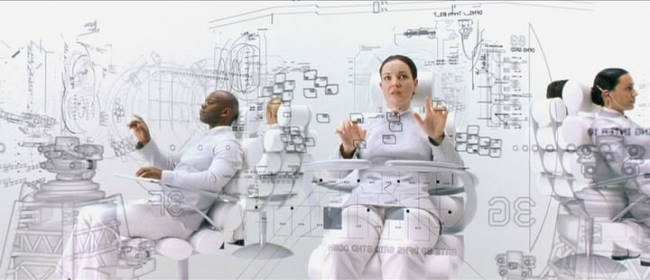
The Pacing: Matrix Reloaded starts off with a bang (literally) before getting into the story. We get a mixture of plot discussions, action sequences and philosophical breaks. But Reloaded is as a whole is definitely of a different style pacing than most movies. It and its sequel more closely resemble the approach taken in Oshii’s Ghost in the Shell, where there are philosophical and thematic discussions that are then played out in the action sequences. The ending clearly comes off as a cliff-hanger, which is to be expected considering this is the middle of a trilogy.
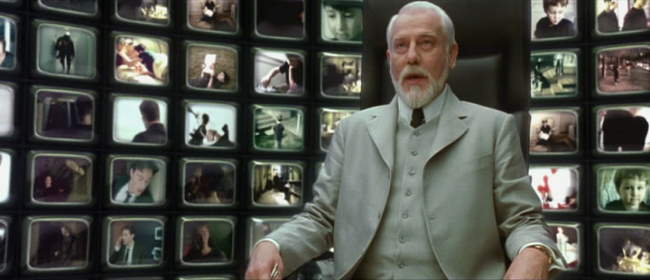
The Architect Conversation: The Architect conversation provides some of the best dialogue of the entire trilogy. This is a philosophical break, a plot buster, and more importantly, the major turning point in the trilogy. The Architect and his minions serve as the ultimate representation of a negative feedback (negating change from an initial goal state) control system. His whole purpose in life is to ensure a steady supply of power (electricity) to the Machine City. As the power is created off the electricity in humans, the Architect must develop a plato cave-like virtual reality simulation that provides humans with a believable reality. The Architect reveals the details of the control system that has kept the machines satiated with electricity for the past 600+ years. In this we find that the prophecy of the One is merely one more layer of control to maintain the status quo to handle the problems arising from freewill (more on this below). Unfortunately, something (or someone) has thrown a monkey wrench into his carefully laid plans. Neo has fallen in love, and in so doing, creates a personal connection with a human that is potentially larger than his overall connection with humanity.
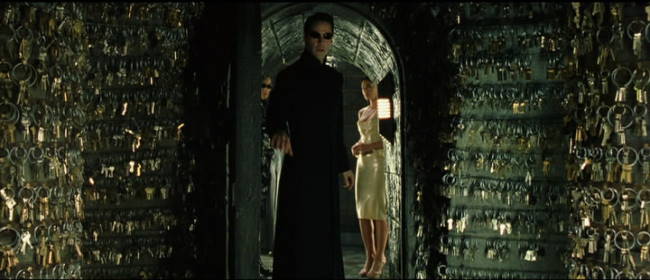
Freewill: Matrix Reloaded spends a good bit of the philosophical breaks discussing the impact of freewill on actions, decision making and on control systems. The Merovingian assets that without the “why,” freewill is merely a facade by those in power that is placed on the powerless. The architect who created the Matrix based on mathematical equations. While he has accounted for almost all anomalies, he had to develop a special periodic subroutine to address the issue of freewill. Because a very small subset of the population would reject the Matrix programming, there needed to be a way of handling this. His approach involves the creation of an external holding bin called “Zion,” which which he would let fill up with the problem battery people, and then every hundred years or so would clean out the holding bin and start again. Simultaneasly, Morpheus, who is unaware of this freewill control subroutine, sees the prophecy of the One as a deterministic journey - one which both reduces the power of freewill while supposedly saving Zion.
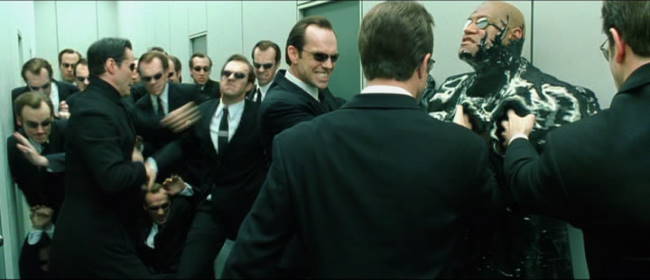
Positive Feedback Out of Control: From a cybernetic standpoint, Positive feedback, or the deviation from an initial goal state, plays a huge role in both reloaded and revolutions. In fact, both movies constitute an emergence and interplay among dueling feedback systems. The architect has created a negative feedback system that has been in force for at least 600 years. Yet now, the perturbations to the negative feedback control system are systemic – in fact, they constitute an initial kick in an entirely new direction. The study of cybernetics tells us that negative feedback systems are destroyed – often never to be repaired to their original state – if the upper or lower threshold values in the are exceeded. For instance, if the body temperature in a human exceeds 106 degrees Fahrenheit, the human will die. In the futuristic dystopia of the Matrix, this is the strategy the Oracle takes. The rationale is that unless the architect’s control system is rendered moot, the “ebony and ivory, living in perfect harmony” future (with machines and humans) the Oracle desires cannot occur.
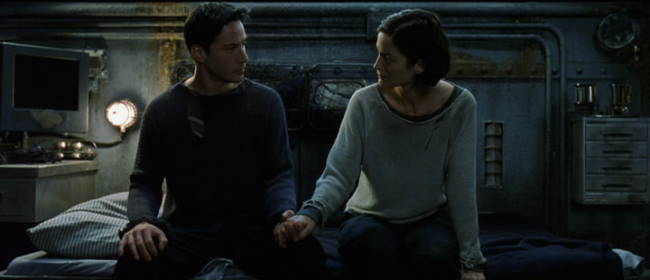
Elements of the positive feedback system, represented in totally by the Oracle and the causality she creates, include both a modification of Neo’s operant conditions and an intrusion into Mr. Smith’s deletion. Neo’s love for Trinity changes the outcome of the Architect’s freewill subroutine – instead of having only one real choice (saving humanity), Neo has a new choice – save trinity now and spend 24 hours trying to rescue Zion and humanity or continue with the control system which will wipe out Zion. Additionally, Mr. Smith has been transformed into a virus. When Neo destroys him in the first movie, Mr. Smith did not disappear – instead (as we find out in Revolutions), the Oracle intervenes and creates the new, viral Smith. While there is no resolution to this in reloaded, the context is set for the resolution in Revolutions.
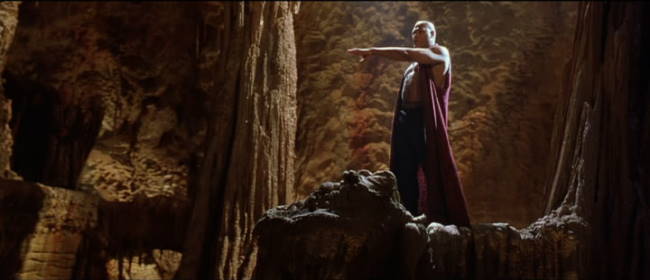
I Believe…: I believe this phrase (“I believe”) is used twenty times or more in Reloaded. There are times it fits perfectly, whereas others it seems to interfere with the dialogue. The scene where Commander Lock is discussing strategy with the Council is the most egregious example of this. Versus “I believe we need every ship…” it would have been far more realistic had he used a simple “We need every ship if we are even to have a chance…” The problem of course is the whole issue of whether or not the Commander and Council believe in the Prophecy of the One. As impending doom draws nearer, the tendency to place faith in supernatural explanations for salvation becomes too great to resist.
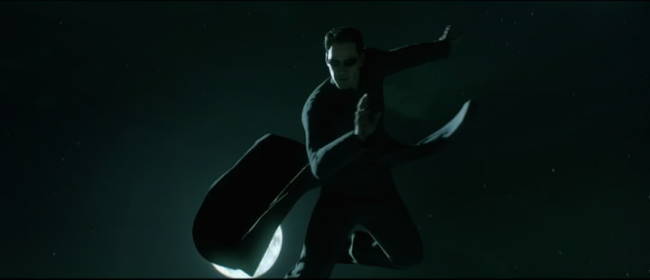
The Bottom Line: The Matrix Reloaded is a terrific follow-up to one of the most influential movies ever. The Wachowski brothers have provided a movie where the action is terrific, the characters are memorable, and the narrative is complex and interesting. Lawrence Fishbourne as Morpheus in particular shines here, which is great, in that is role is significantly diminished in Revolutions. While Reloaded suffers somewhat from being the middle movie in a trilogy, I think it handles this well. The ending provides us with a cliffhanger, which, at the time of release, sparked IMENSE numbers of interesting theories and ideas. I’m guessing most of you have watched Reloaded, so I feel strange giving a plug to watch it. All I can say is I love it.
Page 2: More Screencaps –>
~See movies similar to this one~
Movie Review By: SFAM
Year: 1995
Directed by: Peter Chung & Howard Baker
Written by: Peter Chung et. al.
IMDB Reference
Degree of Cyberpunk Visuals: Very High
Correlation to Cyberpunk Themes: High
Key Cast Members:
Æon Flux: Denise Poirier (voice)
Trevor Goodchild: John Rafter Lee (voice)
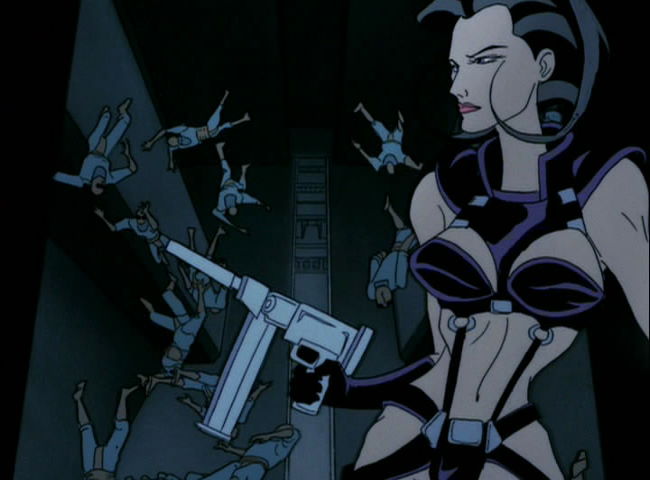
Overview: Aeon-Flux, the brainchild of Peter Chung (also the writer/director of the terrific Animatrix short, “Matriculated”), is one of the really innovative and unique animated shows to come out of the United States. We really have to thank MTV for allowing this show to get produced, and then, after realizing that they just couldn’t control it, for letting it go on unfettered for a second season. Aeon-Flux is not meant to be a coherent whole – this postmodern cyberpunk show is as nihilistic as they come.
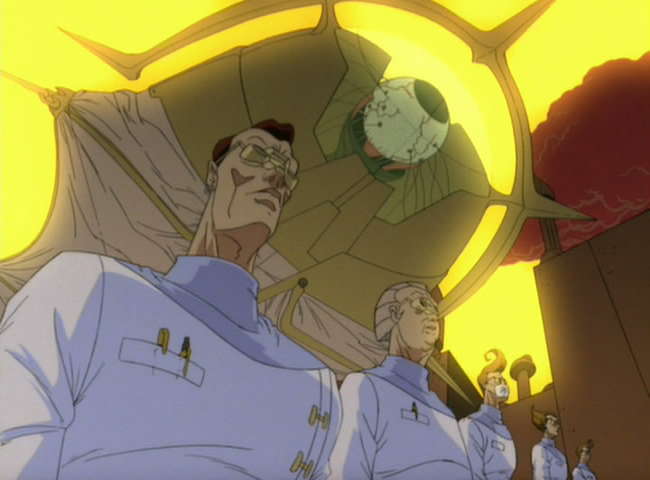
The Story: Aeon Flux takes place in a truly bizarre near-future setting, in which genetic engineering, body modifications, and excessive self-gratification are the norm – yet these extremes take place in a controlled surveillance society. Nearly all events take place in the utopian city, Bregna, which is controlled by a supreme oligarchy. Trevor (voiced by Vampire Hunter D’s John Rafter Lee), one of the two central characters, is a prototypical mad scientist who, at first seems to have little regard for anything other than his own perverted desires. As the show goes on, we find that he is in fact truly besotted with Aeon Flux, who, in many ways is his complete opposite. Aeon Flux (voiced by Denise Poirier) represents the forces of anarchy, and is continually involved in fucking up Trevor’s carefully laid scheming. Unfortunately for Aeon, she too cannot resist Trevor’s guile, which just as often, leads to her downfall.
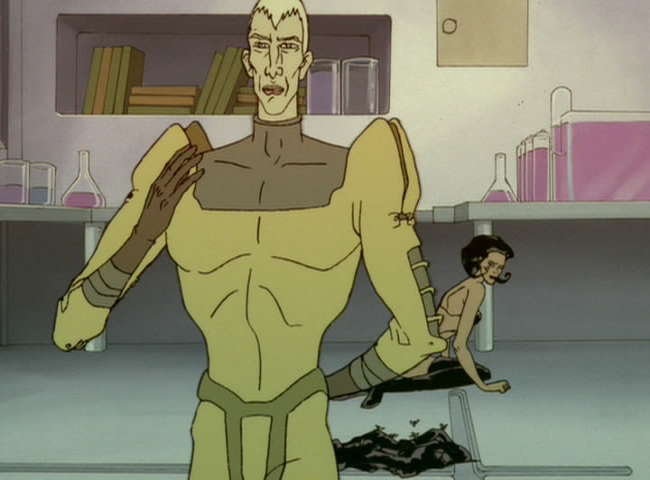
Virtually every episode is different in Aeon Flux, but all of them deal with a strange, fast-paced plot that deals with espionage in some way. Episodes usually have the feel of a chess match, where Aeon and Trevor match wits over completely strange and esoteric plots. More often than not, nobody wins. In fact, unlike most shows, the winning and ending itself is rarely important. This is not what the shows are about. More important is the mood, the feel, and the atmosphere that exudes from the visuals, the dialogue and the score.
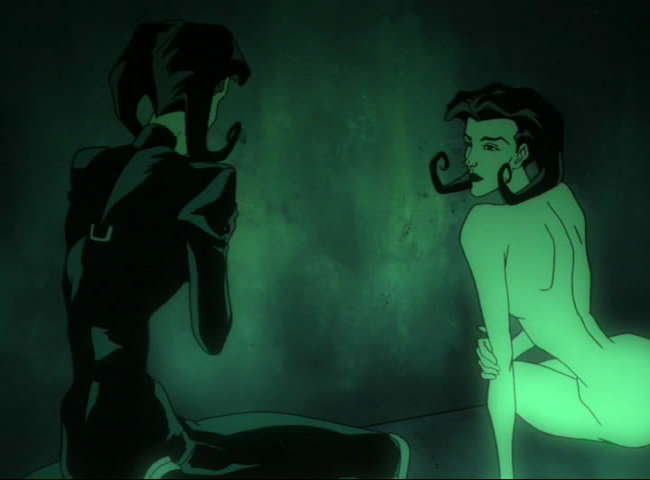
Spoiler – Aeon Flux Dies…A lot! Well, OK, it’s not really a spoiler. It’s more a fact of the show itself. Unlike most shows, in this one, the star dies regularly. Early on in the long shows, Trevor clones Aeon Flux, so thematically, there is now an infinite number of Aeons just waiting to bite the big one. And while there’s now a “rationale” for the deaths, this isn’t really the point – Aeon Flux isn’t meant to hold together that way. It’s almost as if each episode is completely it’s own show. But if she dies, rest assured it will happen in a truly innovative and gruesome way. It could be drowning in a vat of poisen, getting dropped out of a plane, being eating by bizarre genetically modified creatures, or, well, you get the idea. .

Aeon Flux – the Ultimate Anti-heroine? In many ways, Aeon Flux comes across as the ultimate anti-heroine. While she clearly knows right from wrong, and generally tries to stop the worst abuses, Aeon is an ultra-acrobatic, top-notch action/espionage heroine who works for herself. She’s just as likely to take an assassination job as she is to stop a horrid virus from killing mankind. Did I mention she’s drawn up in ultra-hot, skimpy clothes, and likes to have sex a lot? In this way, she really does qualify as a more female than female character (usually cyberpunk reserves these for cyborgs and androids). Most interestingly, because of Aeon Flux’s propensity for dying, you never know whether or not she’s going to make it through alive, or even whether she’ll complete her mission (she seems to fail almost as much as she succeeds). This really does add an excitement to the episodes.
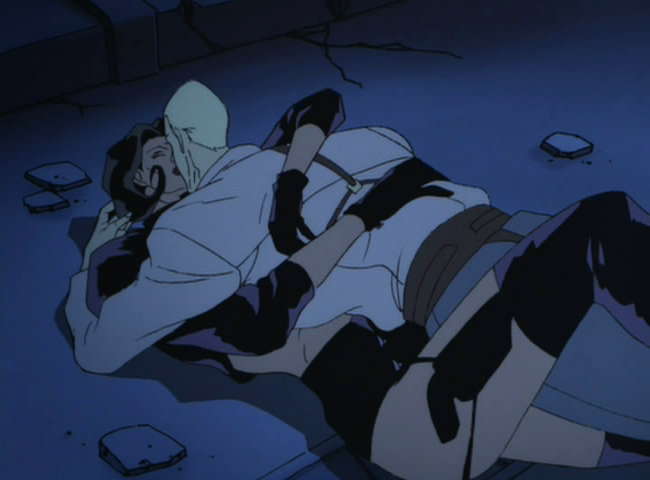
The Love-Hate Relationship: Aeon-Flux and Trevor have a complete love-hate relationship. Even when they are bent on killing one-another, there is always sexual tension, which while often consummated, never leaves the two characters. Every episode gives us yet another chance to explore their relationship in a completely bizarre way. Trevor is definitely Aeon’s Kryptonite. More often than not, his presence alone is enough to make her botch her mission. However, this doesn’t stop Aeon from ruining most, if not all of Trevor’s take over the world plots.
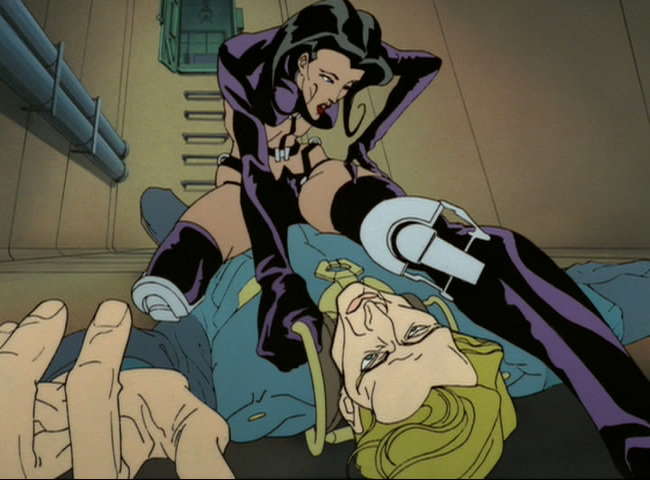
The Visuals and Cinematography: Aeon Flux gives a number of different looks as the show progresses. Perhaps my favorite are the perspective shots such as the one above. We also get lots of wide angle shots, strange close-ups, gradients, and a number of truly surrealistic sets. Unlike most cyberpunk, Aeon Flux doesn’t really adhere to a single dominating color scheme – but to the extent it does, the blues are more highlighted than the rest. Usually, each episode will have a unique theme that dictates the color choices – often they will take a color palette (oranges, greens, etc.) and detail it out in interesting ways. Some episodes are truly surreal in nature, while others are straight neo-noir. The overall goal is always to innovatively create a far-out intense atmosphere wrapped up in a tightly paced, no-nonsense near-future espionage show. More often than not it succeeds.
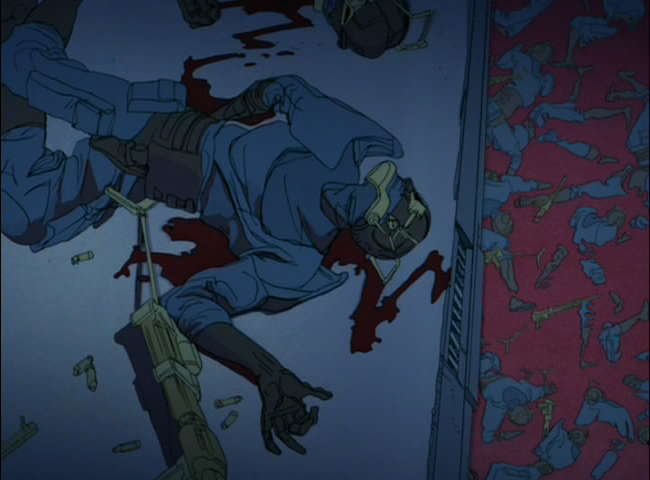
The Violence: Much to MTV’s initial chagrin, Aeon Flux is NOT a kids show. This is an adult cartoon in every way possible, including the intense violence. While the shorts are more violent than the half-hour episodes, Aeon Flux is consistently violent. There are leg amputations, deaths by gunshot, poison, insects, creatures, aliens, viruses, et cetera (often to Aeon herself!). Blood and gore are often just a scene or two away. All of this serves to strengthen the near-future but otherworldly atmosphere of Aeon Flux.
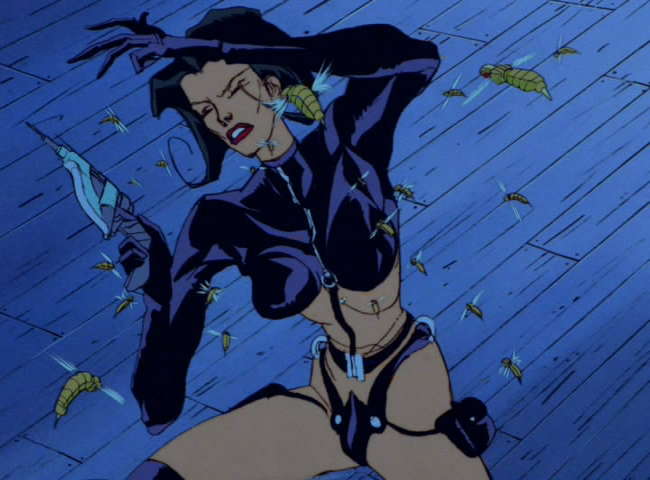
The Gadgets: Aeon-Flux is filled with gadgets of all flavors. Most common are body modifications and “biopunk” elements (just learned that word ). Body modifications include external spinal cord implants, leg jumping implants, conversions of limbs, eye implants, and various compartmentalized bodily storage areas. Genetic engineering is a huge theme in Aeon Flux, far more than the cyber-aspects. We also see repeated instances of cybernetically modified insects who’s function is to inflict a virus of some kind into a target population (Now we know where DARPA got the idea from!). Needles are also a recurring them, and show up everywhere from guns, to security implements, to, um, the operating table.
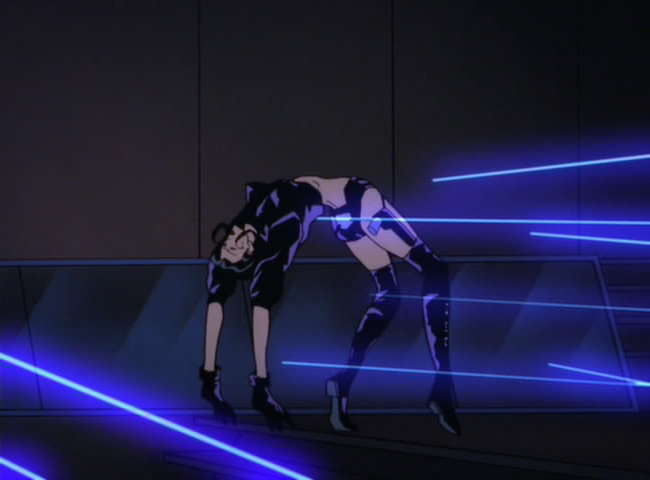
The Bottom Line: Aeon Flux is one of the really creative shows to come out of United States Television. This show validates the purpose of cable TV – we get to see talented folks like Peter Chung let lose their creative energies to produce something truly unique. And while I normally don’t spend too much time talking about the DVD features, I must on Aeon-Flux – the DVD set is flat-out terrific. I almost put it up there with Errol Flynn’s Robin Hood and The Kino edition of Metropolis as one of my favorite DVD productions of a long-lost show. The commentaries, featurettes, and extras are all terrific on the Aeon Flux DVD. If I had any qualms about whether to give Aeon Flux 8 or 9 stars, the incredible quality of the DVD set answers it for me.
More Aeon Flux Screencaps on Page 2–>>
~See movies similar to this one~
Movie Review By: SFAM
Year: 1987
Directed by: Paul Verhoeven
Written by: Edward Neumeier & Michael Miner
IMDB Reference
Degree of Cyberpunk Visuals: High
Correlation to Cyberpunk Themes: Very High
Key Cast Members:
Officer Alex J. Murphy/RoboCop: Peter Weller
Officer Anne Lewis: Nancy Allen
Dick Jones: Ronny Cox
Bob Morton: Miguel Ferrer
Clarence Boddicker (Crime Lord): Kurtwood Smith

Overview: One of the truly unique movies in the cyberpunk genre, Robocop seems to be slowly receding from our conscious. No longer (in the US) is it carried at places like Best Buy. This is truly a shame because Robocop offers us one of the best instances of near-future cyborgs on film, and in the process, raises some pretty interesting questions. One top of this, Robocop offers some really fun satire along with an in-your-face realistic violence tone throughout that only adds to its mood.
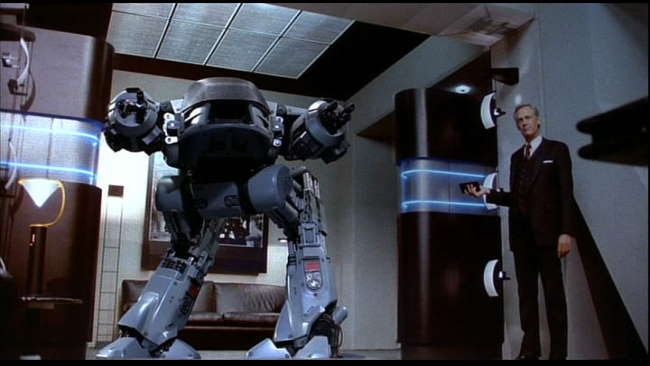
The Story: In a very near-future setting, general law and order has broken down. In the crime-ridden city of Detroit, Omni Consumer Products (OCP) has taken over the public safety duties. To cut costs, they have decided to explore options for automating the police force. One option supported by Dick Jones (Ronny Cox) the number 2 guy at OCP, involves the development of a fully automated mobile weapon system called “ED 209.” While ED 209 is an absolute badass, it screws up in the final demo and ends up peppering one of OCP’s employees in the process.
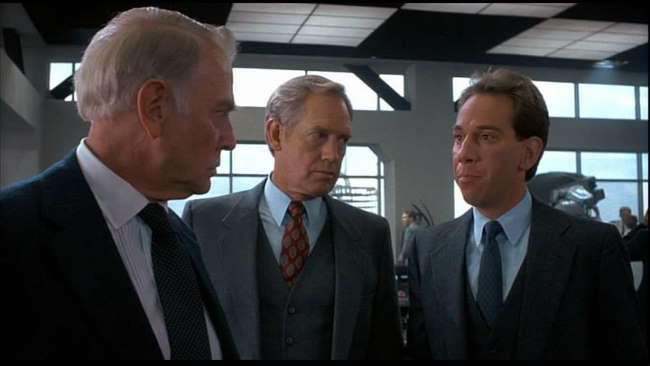
Enter up and coming executive, Bob Morton (Miguel Ferrer). Bob takes ED 209’s demise as an opportunity to convince the CEO to give the Robocop project a try. This involves taking a “just-dead” cop, and embedding the key parts of his body (brain, lungs, heart, etc.) into a robotic body that interfaces and “controls” the mental processes through controlling prime directives. Detective Murphy (played wonderfully by Peter Weller), who has just died in a gruesome death at the hands of Detroit’s crime lord (Kurtwood Smith) becomes the new “volunteer.” His memory is erased, his limbs are removed, and then becomes OCP’s corporate property as their latest innovation.
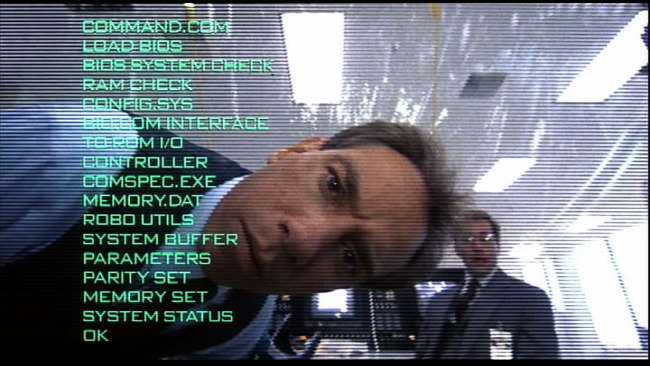
Murphy is transformed into a fully encased crime fighting machine. Robocop is released on the streets to start kicking ass. Unfortunately, Dick Jones doesn’t take his defeat gracefully, and begins to cause trouble both for Robocop’s creator, Bob Morton, and finally for Robocop. It turns out that OCP’s plan for managing detroit’s crime situation isn’t all above board, as there appears to be some linkage between OCP and Detroit’s crime lord. Robocop’s troubles get even worse as he begins to remember who he was in a past life.
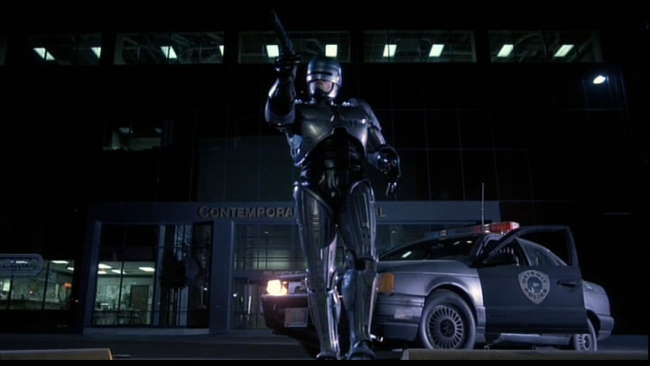
The Satire: Verhoeven is known for having an off-beat sense of satire. In a technique later used for Total Recall and Starship Troopers, Robocop does this primarily through its news reports and commercials. These, along with the corporate greed thematics transforms Robocop into a social commentary on the 80s excesses. The Commoditization of society permeates every aspect of human life in Robocop. Corporations are inherently evil and humanity is a cheap sales pitch. Like Starship Troopers, you’ll continually catch yourself smiling at the commercials and news reports, as Verhoeven really has a talent for this type of satire.
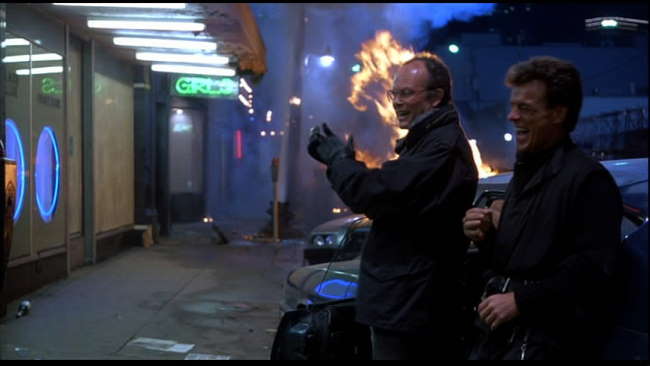
The Violence: Fair warning – Robocop is an extremely violent movie – so much so that upon its initial release, they had to cut two seconds of violence to prevent from receiving an “X” rating. Nothing is held back here, as Verhoeven continually strives for hyper-realism. We see limbs getting blown off, blood spattered faces and walls, and in-your-face gore of all varieties from beginning to end. However, the violence doesn’t stick out as a sore thumb – instead it serves to give the near-future city a nourish realism feel. In short, it works within the context of the narrative and surrounding visuals.
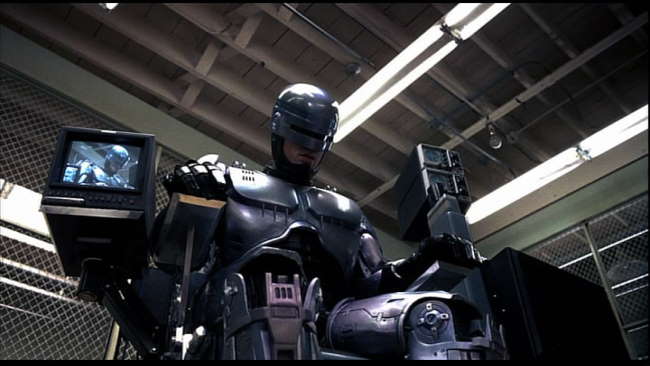
The FX and Set Designs: While Verhoeven gives us a somewhat futuristic city, he seems to err on the side of looking “normal.” We see this most clearly in the Ford Taurus police cars (which were brought in after everyone agreed the futuristic police car designs looked too tacky to be considered). However, the set designs are all wonderfully constructed, and all seem work well with one-another. The ED 209 looks terrific, and the stop-motion animation for it generally works. Robocop’s exterior design does look hoaky at first, but you eventually get used to it. On the other hand, Robocop without his helmet looks flat-out awesome.
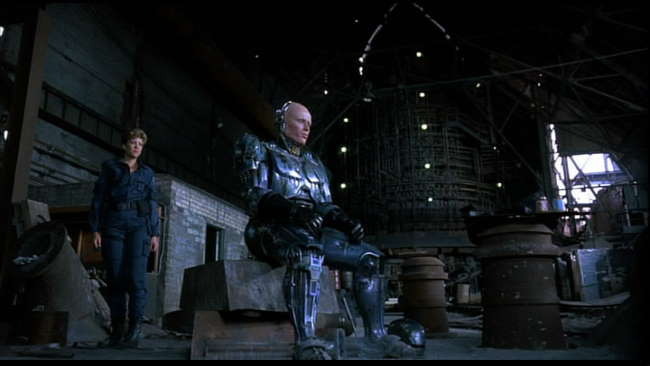
The Cyborg Questions: Robocop/Murphy give us a rich set of questions to ponder relating to cyborgs, the integration of programming with human minds, and in determining ownership after death.
- Cyborg and Humanity: As Murphy begins to realize who he was, and worse, what he’s become, the question asked is what degree of Murphy’s humanity remains? Murphy’s partner, Anne Lewis (played by Nancy Allen) serves to surface these concerns, as she still thinks that Murphy is inside somewhere. Yet, every aspect of humanity has been taken away from Robocop – he doesn’t have a home, but instead returns to a borg-like podchair at night to regenerate. Even if Robocop eventually considers himself human in some sense, it’s no longer clear what that even means. At best, Robocop is part of that strange category we call “post-human.”
- Man-machine interface – Robocop Style: Robocop gives us an interesting look at human brain-matter that has been fully integrated into a cybernetic body. Even more interesting though is the notion that external programming could limit the functioning of the human brain from controlling its new cyborg casing. If we think about it, this isn’t as far fetched as it may initially look: similar to how firewalls block “targeted” information from either entering or exiting a network, Robocop’s programming ensures the human mind adheres to the prime directives. But while the prevention part seems possible, the “directive” nature of the rules seems dubious, as does the erasing of his memory. These perhaps, are far harder to do without destroying the “cop experience” they so desired by picking Murphy in the first place.
- Dixie Flatline Construct Concerns: Similar to the Dixie Flatline Construct in Neuromancer, for all intents and purposes, Murphy is dead prior to being transformed into Robocop. At best we can consider him a zombie as his brain matter was re-animated after death. But like Dixie Flatline, he can think and perform sensemaking. Also like Dixie Flatline, he is limited by programming constraints. However, unlike Dixie Flatline, Robocop can still “feel.” So the question is this – if we develop the capability to re-animate someone’s consciousness after death, do they have the same basic human rights as they did when they were alive? Or are they the property of the corporation who revived them? Even weirder, could corpse’s estate executor (or spouse, for that matter) “sell” the corpse’s consciousness to a third party? If this is so, could your conscious be sold after the fact to pay off unpaid debts? Truly, the questions are mind-boggling!
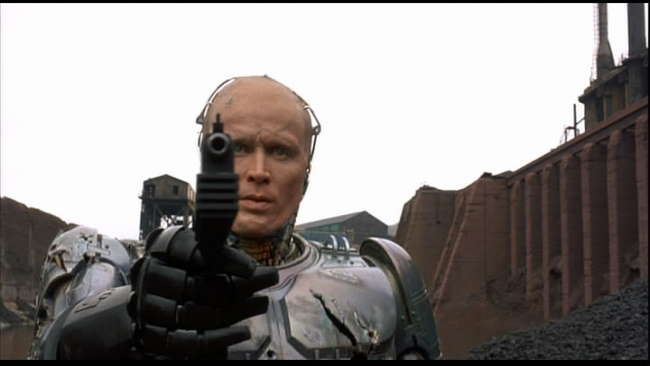
The Bottom Line: Robocop has to be considered one of the essential films of the cyberpunk genre. Some of the action scenes could have been better choreographed (a lot of the bad-guy deaths had the worthless storm trooper feel to them), but truly, the quibbles with this film are minor. Unlike the sequels, which largely come across as pathetic attempts to cash in on the original’s success, Robocop takes itself seriously from beginning to end. Because of this, it really does rise to something special. Even though Best Buy no longer considers Robocop worthy of carrying, don’t let this fool you – assuming you can stand the violence, Robocop deserves to be watched.
~See movies similar to this one~
Year: 1993
Directed by: Hiroshi Fukutomi
Written by: Yukito Kishiro (Manga), Akinori Endo
IMDB Reference
Degree of Cyberpunk Visuals: High
Correlation to Cyberpunk Themes: Very High
Key Cast Members:
Gally (Alita): Miki Itô
Ido: Kariya Shunsuke
Yugo: Kappei Yamaguchi
Chiren: Mami Koyama
Vector: Shigeru Chiba
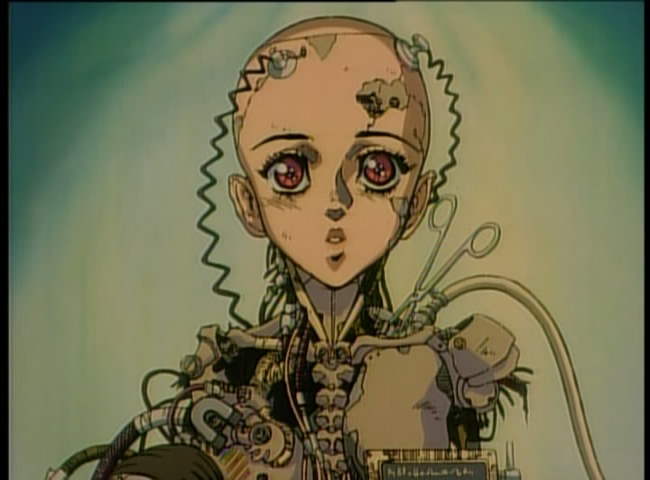
Overview: Battle Angel is based off a very well done Manga series called Battle Angel Alita. The movie covers the first two volumes of the Manga: Rusty Angel, which documents Alita’s “rebirth” and Tears of an Angel, which portrays a tragic love story. This anime from 1993 is one of the best man-machine interface animes out. The story is solid, and the drawing for that time period is terrific. While you might hear some gripe that the Manga is better, I think Fukutomi did a terrific job in taking Kishiro’s story to anime. I can only hope that James Cameron does a similarly wonderful job with the upcoming live action version of this. Just a warning - this is not a kids story - it contains lots of blood, head removals and minor amounts of nudity.
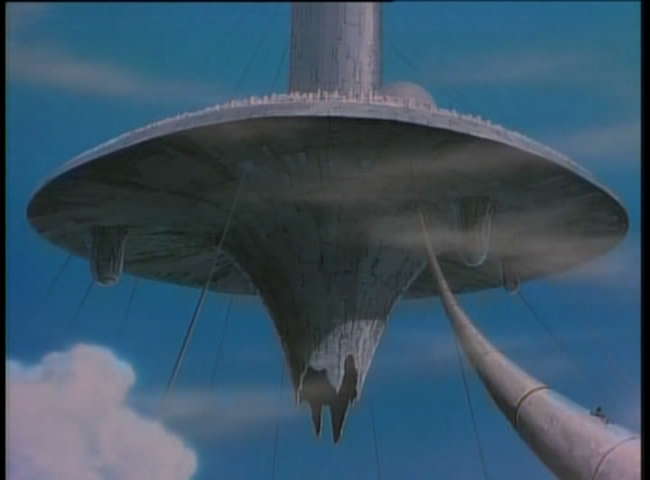
The Setting: Battle Angel takes place far into the future, after a societal collapse has occurred. Advanced human society has been relegated to a floating city called Zalem, that sits above a refuse heap called Scrap Iron City, which is inhabited by denizens living off the scraps and waste products Zalem expels. A corporation called the “Factory,” the primary employer for Scrap Iron City, sends products back up to Zalem through a series of huge metal tubes. Cyborg technology has become a way of life, with many “humans” having only their brain remaining from their original human body host. Scavenging and theft has become a way of life for many. Backbones are a particularly sought after commodity by thieves, who sometimes will violently take them from their living hosts. As social services no longer exist, the Factory posts “bounties” for the heads of the most egregious villians, which bounty hunters, called Hunter-Warriors pursue for money.
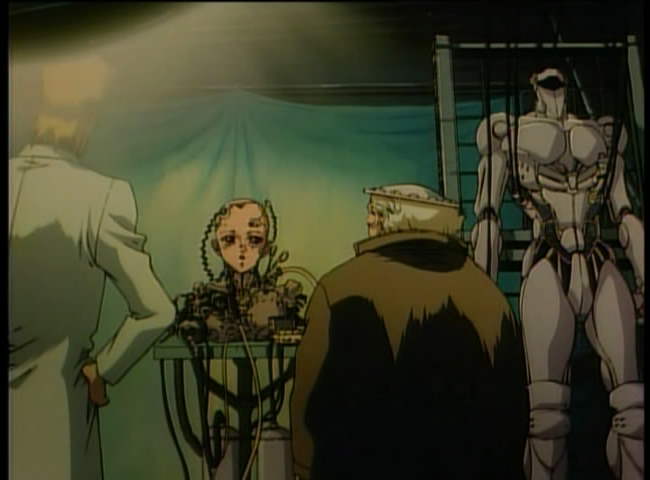
Rusty Angel: Daisuke Ido, an cyborg doctor extraordinaire, former citizen of Zalem, scavenges through the refuse heap to find spare cyborg parts to repair the citizens of Scrap Iron City. One day he comes across a female cyborg head that has a still-living human brain in it. He sets out to repair this head and gives her a wonderful body off of parts he has collected. He names her Gally (she is called Alita in the Manga), and she seems totally restored, except for the loss of memory from her earlier life. Ido becomes attached to Gally and they quickly develop a father-daughter type relationship.

Gally learns that Ido moonlights also a Hunter-Warrior both for moral reasons and to support his medical practice. Gally saves Ido from certain death, and thus, reveals that she, in her former life, was also a very talented warrior. Under protest from Ido, Gally asserts her individuality and desire to become a Hunter-Warrior like Ido, so that she too can have purpose to her life.
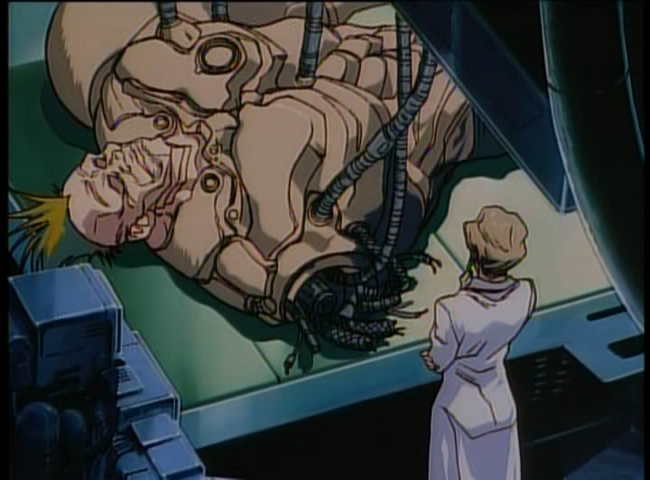
Chiren, also a cyborg doctor and Ido’s former partner, has also been ousted from Zalem, and is consumed with finding a way to return. Deciding that she will do anything to make this happen, Chiren hooks up with Vector, a shady character who has connections with the “Factory,” who agrees to eventually take her to Zalem in return for sexual favors and for her assistance in building a supra-cyborg gladiator named Greweicia for the fighting ring. This cyborg warrior also has a penchant for eating brains, and ends up on the bounty list. Chiren, wanting to be seen as superior to Ido, gets Greweicia to fight Gally in the hopes of destroying her, and thus, destroying Ido.
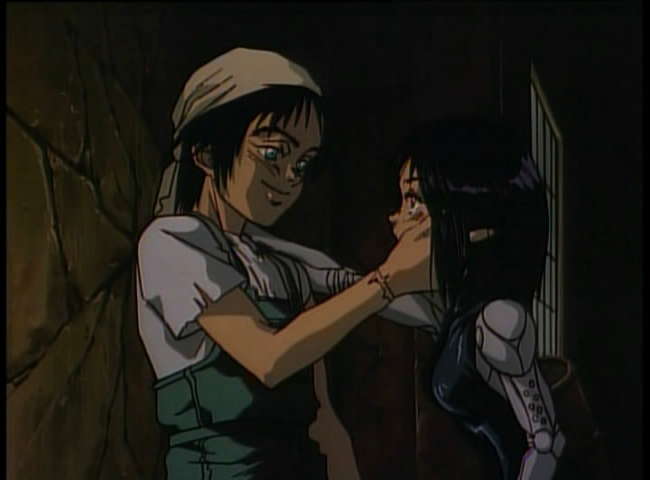
Tears of an Angel: Gally, in exploring the city has become infatuated with a hard working body named Yugo, who dreams of going to Zalem. Although it’s common knowledge that nobody born in Scrap Iron City can ever go to Zalem, Yogo is also consumed with finding a way, and has gotten an agreement from Vector, who promises Yugo if he can make 10,000,000 credits, than he will take Yugo to Zalem. Yugo has taken him up on his offer and has started stealing cyborg spinal cords as a way to augment his day job of fixing machinery. He is discovered, and is put on the Bounty list. Gally, who has fallen deeply in love with him, tries to rescue him from a rival bounty hunter. Unfortunately she is too late, but is able to save his head, and asks Ido to turn him into a cyborg. Even after becoming a cyborg, Yugo’s dreams of reaching Zalem cannot be abated, as he sees his life a struggle against the worthlessness that is the Scap Iron City.
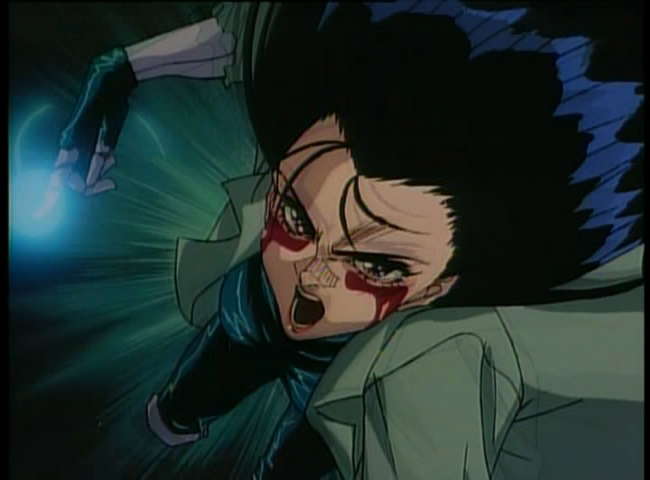
The Artwork: In Battle Angel, we see strong influences of Akira in most every aspect of the production. From the facial expressions to the darkly textured backgrounds to the fighting style approach, Battle Angel clearly has used Akira as a template for modern animation techniques. Like many OAVs of this time period, some of the backgrounds are bland while others are lavishly penned and inked with multi-layered designs. They “pick their battles” with the designs, but for the most part, the decisions are solid. The simple designs are in backgrounds such as the sky and in Ido’s house. The more complex ones are in the underground, Yugo’s hang out, and in the refuse heap scenes – this is where most of the action and plot take place.
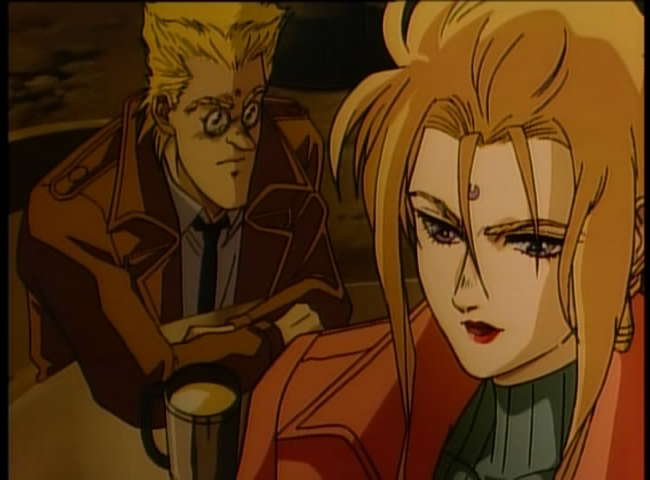
Changes from the Manga: While I think Battle Angel is a terrific anime, there are some changes from the Manga that some find annoying. Most bizarre is the renaming of Alita to Gally, and the city Tiphares to Zalem. However, unlike some, I don’t find the changes in the plot to be that problematic. The anime wonderfully captures the essence of the Manga. Perhaps the biggest change is the rationale for Alita’s powers. In the anime, we really don’t get an explanation, but in the Manga, Alita is first given a normal body by Ido, and ends up destroying it in her first fight. Realizing that Alita is a warrior at heart, Ido gives her the body he has saved for a long time – that of a berserker warrior. The primary villain in Rusty Angel is also different – he is a being who has grown up in the sewers, and after losing his body in fighting Alita, he takes over the Gladiator’s body. And Chiren, a central character in the anime is not in the first to novels of the Manga. Again, for the most part, I have no problems with the changes, and actually love the dimension that Chiren adds.
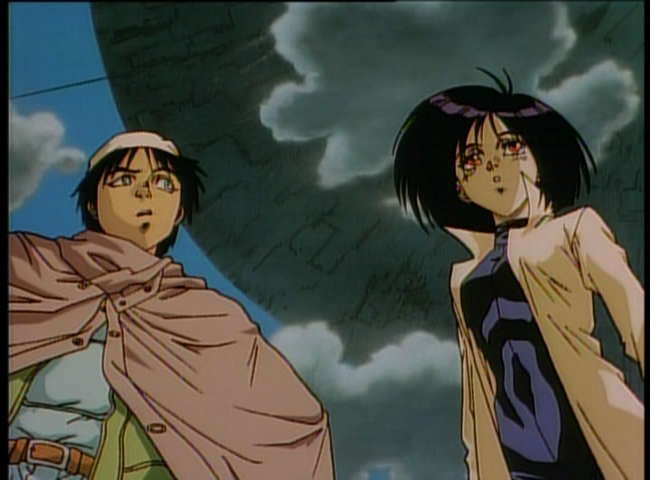
The Bottom Line: Battle Angel (Alita) just works for me as an anime. It is intelligent enough and well enough executed to get you to imagine a world where cyborgs are a reality. The world from the underground perspective is well done and Alita (I call her Alita, not Gally) as a character is terrific. Along with Armitage III and Ghost in the Shell (obviously), Alita is one of the best animes of this kind. Just a caution for those who have only seen the VHS, like most Japanese animes, Battle Angel comes off FAR FAR better with the Japanese dubbing cast than it does the English cast.
~See movies similar to this one~
Year: 2004
Directed by: Jeff Renfroe & Marteinn Thorsson
Written by: Jeff Renfroe & Marteinn Thorsson
IMDB Reference
Degree of Cyberpunk Visuals: Medium
Correlation to Cyberpunk Themes: Very High
Key Cast Members:
Simon J.: Jeremy Sisto
Derrick: Udo Kier
Howard: Lance Henriksen
Trish: Deborah Kara Unger
The Neighbour: Bruce Payne
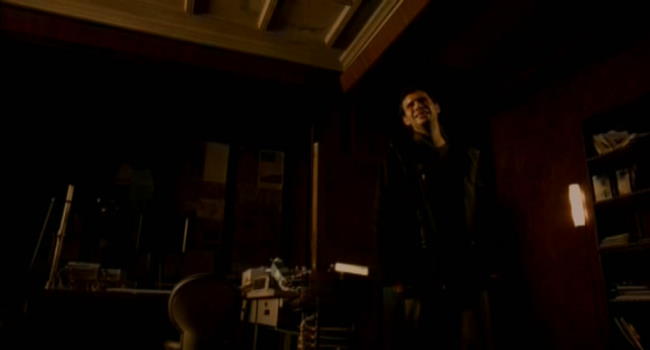
There are good people and there are bad people and they’re on their way,
and they want you, Simon…
The bad people can save you, but they won’t…
The good people want to save you but they can’t…
Overview: Every now and then I run across an absolutely extraordinary cyberpunk film, largely forgotten or ignored by the film going masses. More often than not, this film is foreign and never had a decent release in the US (where I’m from). One Point O (called Paranoia 1.0 in the US) is European a film that meets these criteria. Truly, you’ll be hard pressed to come close to finding an immersive film as One Point O. When you consider this was reportedly shot and produced on a budget of 1.7 Million, you begin to understand the enormity of what was accomplished here. No, you don’t get cool explosions or guns, or fancy CG effects, but you do get an absolutely awesome near-future dystopic story with a biting commentary on advertising and software development, all wrapped up in an extremely immersive, slow paced film. Everything is subordinated to the mood here, which is emphasized by the color choices and simple score. Unfortunately, I will need to be pretty vague in this review, as the ending definitely has a Sixth Sense type feel to it.
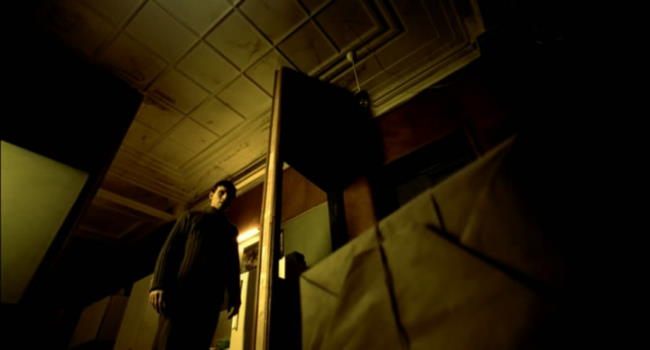
One Point O is about a computer programmer named Simon who works at home in a truly dingy, run down apartment building in a very shabby part of the city. He comes home to find a package waiting inside his apartment, and gets worried as nobody should be able to get inside. He opens the package, only to find that it was an empty box. This happens again and again, each time making Simon more and more paranoid. One top of this, he is late in delivering his the code he’s been working on to his customer. It appears as if his code has become infected with a virus, and worse, he really has a craving for milk!
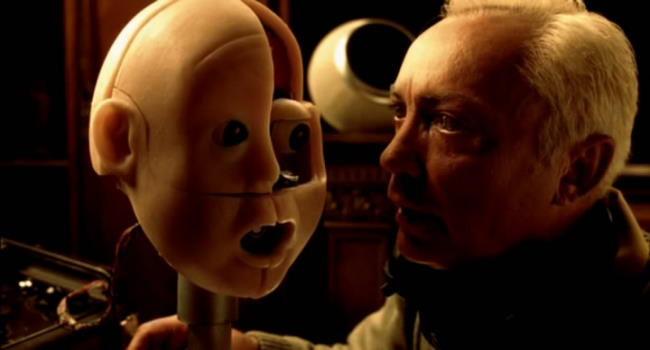
Every character in One Point O is quirky and memorable. Udo Kier (Ralfi from Johnny Mnemonic), one of my favorite role actors, plays an eccentric robotics hobbyist who has a nanotechnology-enabled couch that changes colors and cleans itself at the click of a button, and creates a sentient talking head in his spare time (this talking head named Alex has a penchant for making very prescient phone calls). Bruce Payne (Passenger 57, Hellborn) plays a neighbor VR game maker who creates S&M VR porn experiences by acting out the scenes with various partners. Deborah Kara Unger (Fear X) plays a cancer nurse in search of fleeting humanity wherever she can find it. Lance Henriksen (Bishop in Aliens) plays a strange, zen-like repairman who always seems to know what’s going on. Finally, Emil Hostina places a voyeuristic landlord who loves to eat meat. But its Jeremy Sisto who steals the camera - he’s simply terrific playing a normal guy overtaken by extremely weird events.
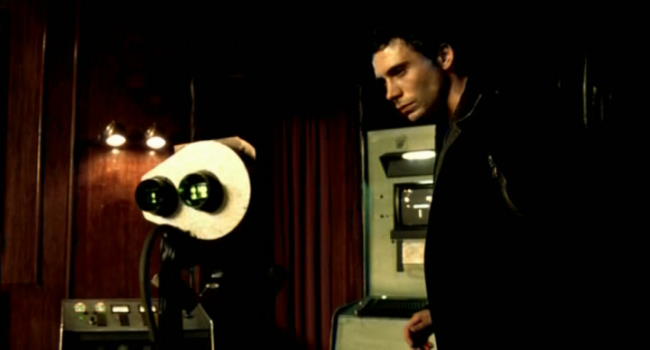
The Visuals: Like many cyberpunk movies, One Point O is dominated by a single color scheme - in this case we get a spectrum, from a yellow to pale orange to reddish-brown, with an occasional pale green as a highlight. Pretty much the whole movie (with the exception of the white convenience store which represents the corporation) takes place in those colors. Further accenting the dystopic quality is the continually run-down feel of the place. The apartment building is continually falling apart, as is virtually everything else except for the local drug store. While its clear that advanced technologies are the norm in this world, the people in One Point O have clearly been marginalized. They play with patchwork toys and out of date technology.
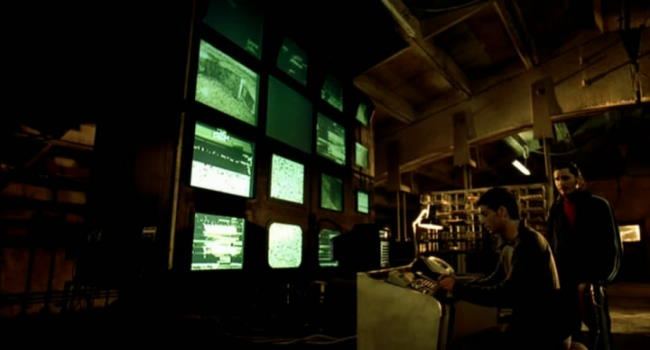
The cinematography is consistently interesting in One Point O, with many using floor shots with expansive backgrounds. However, in some cases, they probably go a bit over-board on the camera angles, such as the use of the close-up phone shot of old, which actually took attention away from the story telling. But again, this is a minor gripe, especially when we include the editing, which for the most part, is also outstanding. But in watching the deleted scenes, I do agree with the director’s commentary that a few shots probably should have been included, most notably the throw-up scene.

The Message: While I can’t go into the actual plot for fear of ruining the experience, I will say that One Point O has perhaps the most biting commentary on advertising and software development you will find anywhere. There is no question who is evil in this movie, even if they are rarely seen. Renfroe and Thorsson take to extremes and then crystallize problems they see in today’s world that form the basis for the story in One Point O. But they don’t state it in an in-your-face way - far to the contrary in fact. The story itself hammers home the message in the starkest manner possible.
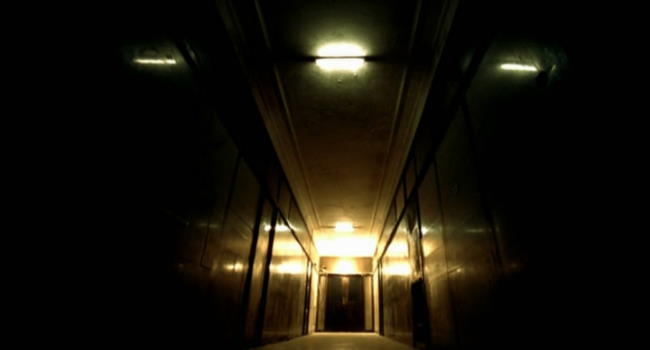
The Bottom Line: As long as you’re not looking for action or sleak visuals, but instead are looking for original cyberpunk themes done wonderfully well on a shoestring budget, One Point O is for you. One Point O is definitely a movie I would LOVE to talk about in detail but I cannot for fear of spoiling the terrific ending (maybe creating a spoiler thread in the meatspace would be the way to discuss it). The pacing has a slightly repetitive feel to it, but only because the movie progresses in a spiral pattern - the same basic pattern of events happen each pass, but events spin further and further out of control each time around. But again - go buy this movie (you’ll want to watch it more than once) - you won’t be disappointed.
~See movies similar to this one~
Tags: cyberpunk movie review paranoia
|
































































































